T.E. Grau's Blog: Author Website, page 4
May 21, 2014
TC Review & Interview: Acclaimed horror author and Punktown creator Jeffrey Thomas scores big with collection WORSHIP THE NIGHT, now available from Dark Renaissance Books
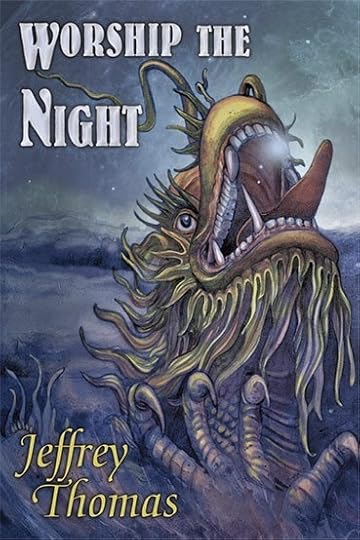 Cover by Erin Wells
Cover by Erin WellsIt only took me one page to fall for Jeffrey Thomas .
It was several years back, and I had just received Unholy Dimensions - which is one of the best "concept collections" that I've ever read, Lovecraftian or otherwise - via the post as a gift from the author, and after choosing to remain undeterred by the rather uninspiring cover (as an admitted art/design snob, I always judge books, in whatever small way, by their covers), I dove in excitedly, based entirely on Thomas' reputation amongst fellow writers of the dark and Mythosy. The opening story in the collection was titled "Bones of the Old Ones," and by the time I'd finished that first page, I knew that I very much liked the way this Thomas fella put together a sentence, how he etched out a scene and drew up his characters. How he melded crime fiction with science fiction in one story, and how he paid homage to classic Weird lit in another. How he built his worlds and all the new and dark things that exist there. Punktown. Lords of the seven moons, how I swooned hard for Punktown.
Much like a woman knowing within the first five seconds of a blind date if they're ever going to disrobe with that person wiping their brow across from them, a reader often knows after that first page if they're on board with an author, or looking for the exit. For me, with Unholy Dimensions, it was love at first sight, and that affection has only grown with each new Jeffrey Thomas story, novella, and novel I've read since then, and there have been many.
In addition to being a precise stylist who weaves in enough poetry without turning purple, Thomas is one of those Big Creators, who has carved out vast swathes of newly tamed real estate from the jungle of the abyss, with the most famous of these being the above-mentioned Punktown, the fictional frontier planet that serves as a crossroads for a menagerie of races and entities all struggling to thrive and survive in a bleak, proto-Lovecraftian universe. And while Punktown put him on the map, and is his most recognizable brand, he's written so much more than that, including a series of stories and novels set in his version of an urbanized Hades, and dozens of other stories and books situated in more general Speculative Fiction arenas, that have been translated into numerous languages around the globe.
Thomas is an important writer of Horror Fiction, and based on his output, range, and immense talent, he deserves to be a household name in the genre, mentioned in concert with the elite writers of dark literature over the past two decades. Maybe he already is (I don't get out to conventions much), and if so, there is some justice in the cold creative world. I just know that writers like Thomas should be writing for a living. Full time. Cashing checks from Big Apple book deals that allow him a comfortable existence without the need for a distracting "day job," where each hour spent away from the keyboard is another hour ripped from the dark canon. Thomas was put here to write books of scary stories and Cosmic Horror. Black, unsettling stuff, and lots of it. He can surely shoulder the burden, based on his bibliography, as well as his recent and upcoming slate of projects. Hopefully, someday very soon, The Bigs will come calling, and Jeffrey Thomas' emergence in the shopping mall book store (do they even have those anymore) will finally come to pass. It has to work out that way. How can it not? I mean, Front Shelf writers belong on that Front Shelf, in the mall or otherwise.
With that preachy preamble behind us, I can put away the soap box and move on to the topic at hand, which is Jeffrey Thomas' recent collection Worship The Night (Dark Renaissance Books, 2013). I say "recent" and not "latest," as I requested a review of the book not too long ago, when it was Thomas' newest release, coming out on the heels of Encounters With Enoch Coffin (written in collaboration with famed Lovecraftian scribe W.H. Pugmire). Today, as of press time, it is now his second most recent collection, as Ghosts of Punktown was released just last week. So, you see what I mean about the whole "prolific" thing.
In Worship The Night, Thomas gives us eight substantial tales that run the dark gamut while showing his range, in terms of tone, location, and POV. Starting with the cover image, many of the stories here seem intensely personal, revealing a candor that is refreshing in Horror Fiction, which can sometimes drape itself in a detached, Kubrickian facade while bloodlessly describing scenes of profound violence. For what I count as the strongest stories in this collection, Thomas digs deep into his own meat and bones to reveal fresh terrors told in that clean, elegant way that marks all of Jeffrey Thomas' work
"The Lost Family" opens the assembly, and features the seraphic protagonist from his novel Fall of Hades , picking up her trail somewhere midway through that book, giving it a feel of a unearthed chapter. Thomas' construction of the landscape (cityscape?) of Hell is incredibly interesting, and made somehow simultaneously more hopeful as well as hopeless than your usual portrayals of the Underworld. An eternal realm of endless terrain is compressed into a claustrophobic crawl through the machinery of damnation, in a realm that is more dangerous than I thought possible.
"Counterclockwise" is the collection's sole Punktown story, and it's a dandy, centering on the bizarre mechanics of one of the many alien cults that have taken up residence on this rough and tumble planet, in this case the mysterious Groi (hmm). A massive clock tower - "a nightmarish wedding cake of black metal, tiered layers that tapered to the huge clock face that surmounted it" - built across the street from an apartment building drives a tenant to distraction, and then to a whole lot more. Uninitiated readers also get an introduction to the Choom, the wide-mouthed species indigenous to Oasis (nicknamed "Punktown" - a local epithet that stuck) who collaborate with the human settlers now running the megalopolis, from shipping to shopping to the police force. Thomas' deft handling of alien races, and the unwholesome monuments they erect, is on full display in that yellowish green clock face of "Counterclockwise." gur... gur... gur..
"The Holy Bowl" flies in the face of its often comical ruling deity, and possesses a tone that reminds me of the works of Mark Samuels or Thomas Ligotti. Grim, mean, and hopelessly cold. I've never read a Jeffrey Thomas story like this, and was pleasantly surprised by the vague familiarity of the setting, and the brutality that waits therein.
"In Limbo," written specifically for this collection, is the first of the outwardly personal stories in Worship The Night, which lends the work a resonant weight that is as heart rending as it is chilling. Written during the confluence of Hurricane Sandy, Halloween, and what Thomas terms "Life itself" in 2012, "In Limbo" sets a story to which we can all relate in a setting we all recognize, and then drops that cozy, tattered quilt over the cliff into a ravine of nightmares, where the End of Everything might be just outside your door, and seeping into your home.
In "About the Author" and "The Strange Case of Crazy Joe Gallo," you can see Thomas having fun, spoofing trope-chasing while celebrating truth being stranger than fiction in the former, and playing fast and Lovecraftian loose with gangland history in the latter. Oddly enough, I picked up The Mad Ones: Crazy Joe Gallo and the Revolution at the End of the Underworld from the library the same week as I received Worship The Night. I haven't yet read the Gallo book, but I'm certain - much to my chagrin - that I won't find any Mythos undertones, nor homages to S. T. Joshi in the official biography of this charismatic Mafioso.
With these light interludes concluded, the plate is cleared for the two remaining stories, both of which are sizable slabs of spitting darkness that seem to build off of each other. "Children of the Dragon" takes our male American protagonist (probably not-so-coincidentally named "French") to Vietnam, a country with which Thomas is intimately acquainted. In looking for strange, possibly mythical creatures in the haunted jungles and lakes of Southeast Asia, our cryptozoologist first falls for a local bar girl, who becomes his key to discovering hidden-in-plain-sight secrets he never dared imagine. "Children of the Dragon" is essentially a Lovecraftian piece, set in real world locations visited by Thomas himself, doused in a patina of cosmic dread. This, of course, grounds a darkly fantastical tale in the minutia of reality, giving it a vibe of being not only wholly possible, but most likely true.
In "The Sea of Flesh," we see the United States - specifically, Salem, Massachusetts - through the eyes of an American-born child of Vietnamese immigrants, and her struggles with identity in two worlds that don't fully embrace her. This is a 40 page novelette, which could have been expanded out into a full-on novel with just a tad bit of padding, but thankful stays mean and lean and included as the final story in Worship The Night. "The Sea of Flesh" is a big, layered story populated by complex, multidimensional characters that struggle with job and family, secret desires and the dangers of shared dreaming. Especially in Salem, around Halloween, days after a rotting hulk of fleshy matter washes up into the harbor. It's an award-worthy work of Horror Fiction, and I found myself hoping that the story would never end, partly out of a desire to stay in that bluish world of sporadic joy and crushing sadness, but also because I could see the clouds of doom building on the horizon, and wanted to keep them at bay before they could overtake the land and flatten the souls living there. Some people deserve happiness, and never get it. Some find it, and then have it taken from them. Both are cruel, but the latter is the cruelest.
_________________________________________________________________________

TC: First of all, thank you for taking the time to sit down with The Cosmicomicon and share with all of us. It’s a true honor to have someone of your stature and talent gracing the electronic pages of TC.
JT: You’re too kind, Ted. I appreciate you giving me the opportunity to speak about my work – you’ve been very supportive of it.
If you could, and for anyone living under a very heavy and stubborn rock the past few decades, give us a little background on your writing career. When did you sell your first story, and how did that feel? Has the “thrill of the sale” gone away over the years?
Without digging through my records, I’m going to say it was a story called “The White Bat,” accepted by a small press zine called Dead of Night, in 1990. I was over the moon, because I was thirty-three at that time, and had wanted to be a published writer since I was a young boy. In a very humble way, that dream had been realized. That was the start of a long string of sales to small press zines, though that same year I also sold a story to Fangoria’s sister magazine, Gorezone. Ten years later, after having placed stories in a number of anthologies along the way, my first two books came out in rapid succession: the collections Terror Incognita (Delirium Books) and Punktown (Ministry of Whimsy Press). It’s been book after book since then, with most years seeing several published. I feel it was the critical success of Punktown that got that snowball rolling, so I have Jeff VandeerMeer to thank for publishing that book. As for the continued thrill of the sale…well, there are times when I feel a little jaded, which I think is natural, as is the fact that I’m more excited by some sales than others. Naturally, a “best of” or higher profile anthology sale is going to be greater cause for celebration. Sometimes I have to turn down requests to contribute to certain anthologies or publications, because of time constraints (I have a day job, don’t ya know). If I catch myself thinking, “Oh man, I just don’t have the time for that,” as if impatient or overwhelmed, then I need to mentally slap myself and remember the days when being published in anything was still just a dream. For an analogy, I’m reminded of when I was married to my first wife and one night she was feeling romantic, but I was playing "The Legend of Zelda," and I was like, “Come on, I’m in Level 8!” I had to stop and go, oh my God, what happened to me? You know, when you’re younger and going to bed with someone is all you aspire to. So, we need to reevaluate our perspective sometimes! Still, the years have also brought more realistic expectations about being published, and whatever it is that constitutes “fame.” I know I’ll never be famous, so that subdues the fires to a steady low burn, but knowing I have readers who come back to my work keeps those fires from going out altogether.
I think influences are fascinating, and am convinced that childhood interests follow a person for the rest of their lives. With that so clumsily proclaimed, what authors (or genres) did you read during your childhood? What was your first brush with dark fiction and the fantastical?
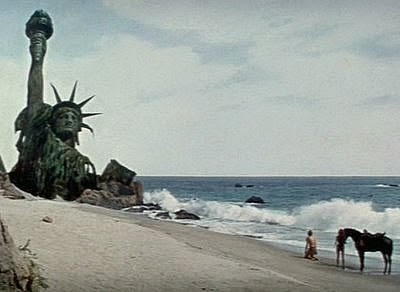 I agree about those childhood influences. When I was a kid, "Planet of the Apes" was my favorite movie, and I think it sticks with me to this day…mainly, using science fiction or the fantastic as a vehicle for satire or social commentary, as I do in my far-future Punktown stories. When I was about ten, my favorite novel was Oliver Twist, and likewise I think that book inspired something that recurs in my work: the notion of a person trying to hold onto some kind of goodness at their core, to maintain their dignity, in an environment of oppressive darkness, as Oliver did as an impoverished orphan and later in the company of criminals. That theme of endeavoring to walk upright in a crushing universe is not only important to my Punktown stories, but my series of stories set in Hades, as well. As for my other childhood fiction reading, it was much more geared toward science fiction than horror, until I got into my teens and read novels like I am Legend and The Exorcist, though of course I’d always loved horror movies.
I agree about those childhood influences. When I was a kid, "Planet of the Apes" was my favorite movie, and I think it sticks with me to this day…mainly, using science fiction or the fantastic as a vehicle for satire or social commentary, as I do in my far-future Punktown stories. When I was about ten, my favorite novel was Oliver Twist, and likewise I think that book inspired something that recurs in my work: the notion of a person trying to hold onto some kind of goodness at their core, to maintain their dignity, in an environment of oppressive darkness, as Oliver did as an impoverished orphan and later in the company of criminals. That theme of endeavoring to walk upright in a crushing universe is not only important to my Punktown stories, but my series of stories set in Hades, as well. As for my other childhood fiction reading, it was much more geared toward science fiction than horror, until I got into my teens and read novels like I am Legend and The Exorcist, though of course I’d always loved horror movies.Even from a young age, did you always see yourself as someday becoming a writer? Was this vocation preordained, or did it become unavoidable later in life?
I've wanted to be a writer since I could write at all, though it mostly started out with my own little comic books. At ten I was trying to write novels, at fourteen completed my first novel, and at fifteen submitted my first novel to a publisher. (It was rejected; as I say, it wasn’t until I was forty-three that I sold my first book.) That novel was a weird combination of "Planet of the Apes" and "A Clockwork Orange." It takes place on a planet colonized by humans, where the indigenous beings are simians. Strife exists between the humans and simians, and youth gangs comprised of either or both races are getting into all kinds of mischief. I think anyone familiar with my Punktown stories can see something larval there. But yes, maybe it was preordained that I become a writer, because the gene is strong in my family. My father was a locally published poet, my mother wrote poetry and a newspaper column, as a teen my sister wrote a newspaper column, and of course my younger brother Scott Thomas is a respected author of horror and fantasy. It was my destiny!
Unlike some contemporary writers of cosmic horror and fiction termed “Lovecraftian,” you use actual names, locations, and other bits of HPL’s work in your own, instead of dancing around it. Was it a conscious choice to write straight-ahead Lovecraftian fiction, or did the ideas just come out that way on the page?
 When I first started writing Lovecraft-inspired work, my inclination was usually to link it directly to his universe, and most of those earlier works were collected in my 2005 book Unholy Dimensions. These days I’m less inclined to name names, preferring a Lovecraftian vibe or approach in the broader sense of that term. Though it depends on the project. For the collection Encounters With Enoch Coffin, which I coauthored with W. H. Pugmire, we both made direct use of Lovecraft’s world and creations.
When I first started writing Lovecraft-inspired work, my inclination was usually to link it directly to his universe, and most of those earlier works were collected in my 2005 book Unholy Dimensions. These days I’m less inclined to name names, preferring a Lovecraftian vibe or approach in the broader sense of that term. Though it depends on the project. For the collection Encounters With Enoch Coffin, which I coauthored with W. H. Pugmire, we both made direct use of Lovecraft’s world and creations.It might sound crass, or possibly inappropriate, but I feel compelled to mention this: For as many years as you have been writing, the output you have shown, the creation of a brand new world of limitless possibility (Punktown), and with the quality of your work and the accolades it has received, I just can’t figure out why “Jeffrey Thomas” isn’t a household name in the more gentrified parts of Horror/Weird Fiction Town. All that said, are you ever confused as to why it is harder for some writers to break through to that next level (a relative term) than others? I know it’s not about skill, as Big Publishers have come calling for lesser talents. Is it timing? Genre? Expertise in dark arts of convention politicking?
These things aren’t always about level of skill, you’re right. It may sound cynical or like sour grapes, but I’m certain schmoozing and politics can play a part in one’s level of success. You see it, it’s plain. Also, bombastic self-promotion has taken some writers farther than their skill level might merit. And yup, luck and timing. And then I have to squarely blame myself for not trying harder to crack the larger publishers, after suffering disappointments in the early days of my career. But I think you really hit on something when you said genre, and here is where I might really prove to be my own worst enemy. A large percentage of my output has been set in Punktown, and those stories blend the genres of science fiction and horror, not to mention crime fiction and, well, everything else but the kitchen sink. I think most of us who love science fiction movies also love horror movies, and you see horror and SF mixed freely in movies all the time (come on: "Alien"). But when it comes to reading, I don’t know, I think for most people it’s still either/or. SF purists might not care for the strong horror elements of much (though not all) of my Punktown work, while many horror readers may not feel comfortable with a futuristic, extraterrestrial setting. To me, it’s chocolate meets peanut butter, so I don’t get it. But let’s get back to the part about me not being proactive enough; that’s been a big problem for me. I’ve had three mass market novels, and for all three of them, the publisher approached me, asked me to write them something for them. Had they not done that, to this day I might not have had any books that were released by a larger publisher. I don’t know, maybe I just don’t like those long waits for the big houses to reply one way or the other. Maybe I became too comfortable on the level where I stand, and move laterally rather than reach higher. But I’m still pleased with my career, still very grateful. Again, you have to stop and remember being that guy who completed stories only to file them away in the closet, unread and unknown. I count my blessings that I have a bunch of gorgeous indie press books with my name on the cover…and yeah, those three mass market books (A Nightmare on Elm Street: The Dream Dealers, Deadstock, and Blue War) will always be feathers in my cap.
Now that I got you in trouble, let’s change gears at bit, and get to Worship The Night. This seems like one of your most personal collections, with stories like “In Limbo,” “Children of the Dragon,” and “The Sea of Flesh” seeming to hew very close to the reality bone. Was this intentional, to dig so close to home? Or was it just a matter of timing, with the stories reflecting what was going on around you at the time?
I didn’t set out to make Worship the Night a more personal kind of collection than others; it just developed that way via the law of averages, since a lot of my stories – sometimes even the most fantastical stuff, like some of the pieces in my latest, Ghosts of Punktown – draw on my personal experiences, or at least my emotional/psychological state. But however it came together, yes, Worship the Night did turn out that way as a whole. It’s a cathartic process, writing that type of story; but more importantly, it can make the work connect with the reader on a deeper level. Maybe the reader has been through the same kind of experience, or something analogous, and certainly the reader has felt those profound emotions before, experienced those fears or desires. That stuff tastes different on the page when it comes from some level of reality. You aren’t faking it. (You know how a CGI person, no matter how highly detailed, just never looks truly alive?) It’s potent raw material, but it can be tricky to make it work in a fictional presentation, where entertainment always has to be your foremost concern.
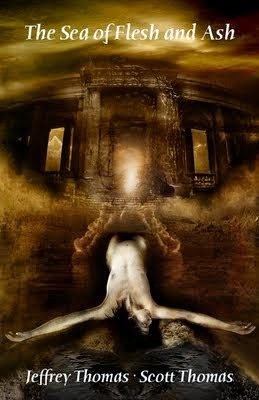
Based on its characters, plotting, themes, and execution, I find the novella “The Sea of Flesh” to be an achievement in contemporary horror fiction, and see it as a story that could have easily stretched into a novel. Did you have any size constraints on it when you began writing it?
Only roughly was there a constraint to keep it on the shorter size as a novel. The story came about when Sea Wallace of Prime Books asked me and my brother Scott to each write a short novel inspired by a piece of artwork created by Travis Anthony Soumis, which became the cover for the finished book, The Sea of Flesh and Ash. But publication was delayed for some years, so eventually we moved the book to an emerging publisher, Terradan Press. The book hasn’t received much exposure, though, hence my decision to reprint “The Sea of Flesh” in Worship the Night. (And Scott’s short novel, The Sea of Ash, is thankfully going to be released as an ebook by Mike Davis of The Lovecraft eZine, who loved Scott’s story to death.) I’m satisfied with the length of the story, though I suppose I could have opened it up further. I think most any short story could be made larger, and a lot of novels could be much more condensed. Some novels feel bloated to me and overstay their welcome, so my own don’t typically get too bulky. My feeling is that the horror story is usually best served by the short form. In the end, unless I’m writing for an anthology with a set word limit, I like to let a story be the length it wants to be, organically.
 As you have included “Counterclockwise” in Worship The Night, I want to talk Punktown a little bit, as I find it to be a very rich, varied, and often terrifying world that is an important landmark in the map of cosmic horror fiction. How and why did you create Punktown, and what did you originally want to do with this place? Has it lived up to its promise, and has it surprised you while constructing it, block by block, story by story? How many more Punktown stories do you think are out there?
As you have included “Counterclockwise” in Worship The Night, I want to talk Punktown a little bit, as I find it to be a very rich, varied, and often terrifying world that is an important landmark in the map of cosmic horror fiction. How and why did you create Punktown, and what did you originally want to do with this place? Has it lived up to its promise, and has it surprised you while constructing it, block by block, story by story? How many more Punktown stories do you think are out there?I came up with the whole fundamental concept of Punktown while riding with my dad somewhere, maybe home from my job, back in 1980. It just sort of burst up from wherever it was brewing in my subconscious, or my muse lagoon, or what have you. I wanted to write of this weird city – more phantasmagorical than strictly science fictional – where any kind of surreal craziness could go down, sort of like a literary Bosch painting. I think the setting has exceeded my initial expectations; it’s grown outwards and upwards over the years, like the city itself. Because all Punktown stories function independently of each other, and rarely carry over the same characters, there’s so much yet to be experienced there that I could no more tire of writing about it than another writer might tire of writing about this world.
“Children of the Dragon” first appeared in the book Geschichten aus dem Cthulhu-Mythos from Festa Verlag as a German translation. You seem to have a healthy following in Germany (as well as Russia, Poland, and Greece) for your books, both in print and audio. How did Punktown spread to the Old Country?
 The same way I sold those three mass market books: they approached me! Thank God my publishers are more aggressive than I am. Germany’s Festa Verlag was the first publisher to do a translated edition of one of my books: a German language hardcover of Punktown, which featured artwork by H. R. Giger on the cover. Giger signed all the signature sheets, as well. Other translations came later, including a Taiwanese edition of my novel Letters From Hades. I continue to work with Festa, a great publisher, and these days my sales in Germany are stronger than my English language sales. And yes, there was even a three volume set of Punktown stories done as wonderful audio readings, by professional actors, from the company Lausch.
The same way I sold those three mass market books: they approached me! Thank God my publishers are more aggressive than I am. Germany’s Festa Verlag was the first publisher to do a translated edition of one of my books: a German language hardcover of Punktown, which featured artwork by H. R. Giger on the cover. Giger signed all the signature sheets, as well. Other translations came later, including a Taiwanese edition of my novel Letters From Hades. I continue to work with Festa, a great publisher, and these days my sales in Germany are stronger than my English language sales. And yes, there was even a three volume set of Punktown stories done as wonderful audio readings, by professional actors, from the company Lausch.Is the project to turn Punktown into an RPG still in the works?
It is, though it’s unfortunately been moving more slowly than everyone had hoped. It was funded by the publisher’s Kickstarter program, which went over $4,500 beyond its $9,000 goal, but I think the delay has mainly come from transitioning the game from Miskatonic River Press to Chronicle City, who came into the picture late in the game (pardon the pun). All the text is finished, but there’s the matter of getting the interior artwork and maps created.
Tell us a little about your newest book, Ghosts of Punktown. How has it been working with Dark Regions Press?
I actually turned Ghosts of Punktown in to Dark Regions a few years ago, but I think the delay there was again one of transition: from previous owner Joe Morey to his son Chris Morey. (I’m fond of both guys, Joe being the publisher of Worship the Night via his new imprint, Dark Renaissance Books.) Chris has been awesome to work with; he really wants to make this book something special. Ghosts of Punktown is my darkest Punktown collection, and I guess that’s saying something. It apparently left its Publishers Weekly reviewer in need of smelling salts. The violence in some of the stories all but blinded the reviewer to any other of the book’s qualities or merits. It was a case of a book ending up in the wrong reviewer’s hands. Conversely, Rue Morgue was highly favorable and didn’t mention the violence at all. That being said, it is an intense bunch of stories, and it isn’t inappropriate to feel disturbed by them.

As a huge Kris Kuksi fan, how did you score one of his works to use as the cover of Ghosts of Punktown?
I can’t recall where I found the first examples of his remarkable artwork, but when I did I went straight to check out his web site. I was so blown away that I entered something like a desperate panic – I needed this guy’s work to be on the cover of Ghosts of Punktown! I approached Joe Morey and asked him if we could request using one of Kuksi’s preexisting sculptures as our cover image. Joe said go for it, and so I approached Kuksi himself and found him to be very cool to work with. Later on, Chris Morey went back to Kuksi and asked if we could use a second image on the back cover of the deluxe lettered edition of the book. Kuksi consented, and not only that, agreed to sign all the lettered edition’s signature sheets, as well. I’m blessed to have had some of my favorite artists represented on the covers of my books: not only Giger and Kuksi, but people like Stephan Martiniere and Alan M. Clark.
I usually ask this of writers, especially ones who have been writing for more than just a few years, and who have made an impact on speculative fiction: How has the nature, makeup, and tone of the weird/horror fiction scene changed during your tenure in the trenches?
I’ve seen a major change, from work that was influenced mainly by bestsellers like Stephen King to work inspired by more weirdly imaginative and daring authors (ironically, from further back in the literary annals) like Lovecraft, Chambers, Blackwood, and so on. I think all the talk and controversy surrounding New Weird and what it is, and if it is, was beneficial in that it stimulated more thought about weird fiction in general. And the massive anthology The Weird, edited by Ann VanderMeer and Jeff VanderMeer, not only furthered that conversation but helped expose current writers to a richer legacy of fantastical fiction than they were perhaps exposed to before. We’re in a new golden age of the weird tale (oops, I used “new” and “weird” in the same sentence; sue me), with people like Livia Llewellyn, Michael Cisco, and so many others delivering artistic, exhilarating, unpredictable work. Within just a couple of months I read new collections by Laird Barron, John Langan, and Nathan Ballingrud that just blew my mind. Unfortunately, the work of these brilliant authors will never reach the level of sales of King’s work, but the horror connoisseur who seeks them out will be richly rewarded.
What do you hope to see out of weird fiction going forward?
More of what I’m seeing now…more and more of it!
Do you have any advice for aspiring writers of horror fiction, or fiction in general?
Read me to learn how it’s done. Sorry, I’m trying to be more concise as the interview draws to its close. And I need to sell books, bottom line.
Any last words, before I replace the blindfold and light up the cigarette?
Cigarette? What are you trying to do, kill me?
Thank you very much, Jeffrey, for sharing your time, energy, insights and stories with us. We wish you only the very best, both on and off the page, and look forward to reading your work for a long, long time.
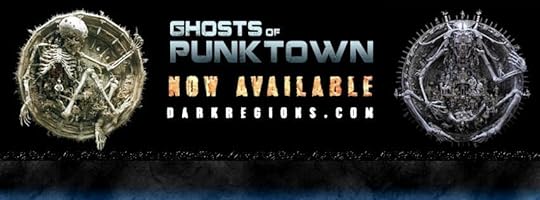
Published on May 21, 2014 13:09
TC Review & Interview: Acclaimed Horror Author and Punktown Creator Jeffrey Thomas Scores Big with Collection WORSHIP THE NIGHT, Now Available from Dark Renaissance Books
 Cover by Erin Wells
Cover by Erin WellsIt only took me one page to fall for Jeffrey Thomas .
It was several years back, and I had just received Unholy Dimensions - which is one of the best "concept collections" that I've ever read, Lovecraftian or otherwise - via the post as a gift from the author, and after choosing to remain undeterred by the rather uninspiring cover (as an admitted art/design snob, I always judge books, in whatever small way, by their covers), I dove in excitedly, based entirely on Thomas' reputation amongst fellow writers of the dark and Mythosy. The opening story in the collection was titled "Bones of the Old Ones," and by the time I'd finished that first page, I knew that I very much liked the way this Thomas fella put together a sentence, how he etched out a scene and drew up his characters. How he melded crime fiction with science fiction in one story, and how he paid homage to classic Weird lit in another. How he built his worlds and all the new and dark things that exist there. Punktown. Lords of the seven moons, how I swooned hard for Punktown.
Much like a woman knowing within the first five seconds of a blind date if they're ever going to disrobe with that person wiping their brow across from them, a reader often knows after that first page if they're on board with an author, or looking for the exit. For me, with Unholy Dimensions, it was love at first sight, and that affection has only grown with each new Jeffrey Thomas story, novella, and novel I've read since then, and there have been many.
In addition to being a precise stylist who weaves in enough poetry without turning purple, Thomas is one of those Big Creators, who has carved out vast swathes of newly tamed real estate from the jungle of the abyss, with the most famous of these being the above-mentioned Punktown, the fictional frontier planet that serves as a crossroads for a menagerie of races and entities all struggling to thrive and survive in a bleak, proto-Lovecraftian universe. And while Punktown put him on the map, and is his most recognizable brand, he's written so much more than that, including a series of stories and novels set in his version of an urbanized Hades, and dozens of other stories and books situated in more general Speculative Fiction arenas, that have been translated into numerous languages around the globe.
Thomas is an important writer of Horror Fiction, and based on his output, range, and immense talent, he deserves to be a household name in the genre, mentioned in concert with the elite writers of dark literature over the past two decades. Maybe he already is (I don't get out to conventions much), and if so, there is some justice in the cold creative world. I just know that writers like Thomas should be writing for a living. Full time. Cashing checks from Big Apple book deals that allow him a comfortable existence without the need for a distracting "day job," where each hour spent away from the keyboard is another hour ripped from the dark canon. Thomas was put here to write books of scary stories and Cosmic Horror. Black, unsettling stuff, and lots of it. He can surely shoulder the burden, based on his bibliography, as well as his recent and upcoming slate of projects. Hopefully, someday very soon, The Bigs will come calling, and Jeffrey Thomas' emergence in the shopping mall book store (do they even have those anymore) will finally come to pass. It has to work out that way. How can it not? I mean, Front Shelf writers belong on that Front Shelf, in the mall or otherwise.
With that preachy preamble behind us, I can put away the soap box and move on to the topic at hand, which is Jeffrey Thomas' recent collection Worship The Night (Dark Renaissance Books, 2013). I say "recent" and not "latest," as I requested a review of the book not too long ago, when it was Thomas' newest release, coming out on the heels of Encounters With Enoch Coffin (written in collaboration with famed Lovecraftian scribe W.H. Pugmire). Today, as of press time, it is now his second most recent collection, as Ghosts of Punktown was released just last week. So, you see what I mean about the whole "prolific" thing.
In Worship The Night, Thomas gives us eight substantial tales that run the dark gamut while showing his range, in terms of tone, location, and POV. Starting with the cover image, many of the stories here seem intensely personal, revealing a candor that is refreshing in Horror Fiction, which can sometimes drape itself in a detached, Kubrickian facade while bloodlessly describing scenes of profound violence. For what I count as the strongest stories in this collection, Thomas digs deep into his own meat and bones to reveal fresh terrors told in that clean, elegant way that marks all of Jeffrey Thomas' work
"The Lost Family" opens the assembly, and features the seraphic protagonist from his novel Fall of Hades , picking up her trail somewhere midway through that book, giving it a feel of a unearthed chapter. Thomas' construction of the landscape (cityscape?) of Hell is incredibly interesting, and made somehow simultaneously more hopeful as well as hopeless than your usual portrayals of the Underworld. An eternal realm of endless terrain is compressed into a claustrophobic crawl through the machinery of damnation, in a realm that is more dangerous than I thought possible.
"Counterclockwise" is the collection's sole Punktown story, and it's a dandy, centering on the bizarre mechanics of one of the many alien cults that have taken up residence on this rough and tumble planet, in this case the mysterious Groi (hmm). A massive clock tower - "a nightmarish wedding cake of black metal, tiered layers that tapered to the huge clock face that surmounted it" - built across the street from an apartment building drives a tenant to distraction, and then to a whole lot more. Uninitiated readers also get an introduction to the Choom, the wide-mouthed species indigenous to Oasis (nicknamed "Punktown" - a local epithet that stuck) who collaborate with the human settlers now running the megalopolis, from shipping to shopping to the police force. Thomas' deft handling of alien races, and the unwholesome monuments they erect, is on full display in that yellowish green clock face of "Counterclockwise." gur... gur... gur..
"The Holy Bowl" flies in the face of its often comical ruling deity, and possesses a tone that reminds me of the works of Mark Samuels or Thomas Ligotti. Grim, mean, and hopelessly cold. I've never read a Jeffrey Thomas story like this, and was pleasantly surprised by the vague familiarity of the setting, and the brutality that waits therein.
"In Limbo," written specifically for this collection, is the first of the outwardly personal stories in Worship The Night, which lends the work a resonant weight that is as heart rending as it is chilling. Written during the confluence of Hurricane Sandy, Halloween, and what Thomas terms "Life itself" in 2012, "In Limbo" sets a story to which we can all relate in a setting we all recognize, and then drops that cozy, tattered quilt over the cliff into a ravine of nightmares, where the End of Everything might be just outside your door, and seeping into your home.
In "About the Author" and "The Strange Case of Crazy Joe Gallo," you can see Thomas having fun, spoofing trope-chasing while celebrating truth being stranger than fiction in the former, and playing fast and Lovecraftian loose with gangland history in the latter. Oddly enough, I picked up The Mad Ones: Crazy Joe Gallo and the Revolution at the End of the Underworld from the library the same week as I received Worship The Night. I haven't yet read the Gallo book, but I'm certain - much to my chagrin - that I won't find any Mythos undertones, nor homages to S. T. Joshi in the official biography of this charismatic Mafioso.
With these light interludes concluded, the plate is cleared for the two remaining stories, both of which are sizable slabs of spitting darkness that seem to build off of each other. "Children of the Dragon" takes our male American protagonist (probably not-so-coincidentally named "French") to Vietnam, a country with which Thomas is intimately acquainted. In looking for strange, possibly mythical creatures in the haunted jungles and lakes of Southeast Asia, our cryptozoologist first falls for a local bar girl, who becomes his key to discovering hidden-in-plain-sight secrets he never dared imagine. "Children of the Dragon" is essentially a Lovecraftian piece, set in real world locations visited by Thomas himself, doused in a patina of cosmic dread. This, of course, grounds a darkly fantastical tale in the minutia of reality, giving it a vibe of being not only wholly possible, but most likely true.
In "The Sea of Flesh," we see the United States - specifically, Salem, Massachusetts - through the eyes of an American-born child of Vietnamese immigrants, and her struggles with identity in two worlds that don't fully embrace her. This is a 40 page novelette, which could have been expanded out into a full-on novel with just a tad bit of padding, but thankful stays mean and lean and included as the final story in Worship The Night. "The Sea of Flesh" is a big, layered story populated by complex, multi-dimensional characters that struggle with job and family, secret desires and the dangers of shared dreaming. Especially in Salem, around Halloween, days after a rotting hulk of fleshy matter washes up into the harbor. It's an award-worthy work of Horror Fiction, and I found myself hoping that the story would never end, partly out of a desire to stay in that bluish world of sporadic joy and crushing sadness, but also because I could see the clouds of doom building on the horizon, and wanted to keep them at bay before they could overtake the land and flatten the souls living there. Some people deserve happiness, and never get it. Some find it, and then have it taken from them. Both are cruel, but the latter is the cruelest.
_________________________________________________________________________

TC: First of all, thank you for taking the time to sit down with The Cosmicomicon and share with all of us. It’s a true honor to have someone of your stature and talent gracing the electronic pages of TC.
JT: You’re too kind, Ted. I appreciate you giving me the opportunity to speak about my work – you’ve been very supportive of it.
If you could, and for anyone living under a very heavy and stubborn rock the past few decades, give us a little background on your writing career. When did you sell your first story, and how did that feel? Has the “thrill of the sale” gone away over the years?
Without digging through my records, I’m going to say it was a story called “The White Bat,” accepted by a small press zine called Dead of Night, in 1990. I was over the moon, because I was thirty-three at that time, and had wanted to be a published writer since I was a young boy. In a very humble way, that dream had been realized. That was the start of a long string of sales to small press zines, though that same year I also sold a story to Fangoria’s sister magazine, Gorezone. Ten years later, after having placed stories in a number of anthologies along the way, my first two books came out in rapid succession: the collections Terror Incognita (Delirium Books) and Punktown (Ministry of Whimsy Press). It’s been book after book since then, with most years seeing several published. I feel it was the critical success of Punktown that got that snowball rolling, so I have Jeff VandeerMeer to thank for publishing that book. As for the continued thrill of the sale…well, there are times when I feel a little jaded, which I think is natural, as is the fact that I’m more excited by some sales than others. Naturally, a “best of” or higher profile anthology sale is going to be greater cause for celebration. Sometimes I have to turn down requests to contribute to certain anthologies or publications, because of time constraints (I have a day job, don’t ya know). If I catch myself thinking, “Oh man, I just don’t have the time for that,” as if impatient or overwhelmed, then I need to mentally slap myself and remember the days when being published in anything was still just a dream. For an analogy, I’m reminded of when I was married to my first wife and one night she was feeling romantic, but I was playing "The Legend of Zelda," and I was like, “Come on, I’m in Level 8!” I had to stop and go, oh my God, what happened to me? You know, when you’re younger and going to bed with someone is all you aspire to. So, we need to reevaluate our perspective sometimes! Still, the years have also brought more realistic expectations about being published, and whatever it is that constitutes “fame.” I know I’ll never be famous, so that subdues the fires to a steady low burn, but knowing I have readers who come back to my work keeps those fires from going out altogether.
I think influences are fascinating, and am convinced that childhood interests follow a person for the rest of their lives. With that so clumsily proclaimed, what authors (or genres) did you read during your childhood? What was your first brush with dark fiction and the fantastical?
 I agree about those childhood influences. When I was a kid, "Planet of the Apes" was my favorite movie, and I think it sticks with me to this day…mainly, using science fiction or the fantastic as a vehicle for satire or social commentary, as I do in my far-future Punktown stories. When I was about ten, my favorite novel was Oliver Twist, and likewise I think that book inspired something that recurs in my work: the notion of a person trying to hold onto some kind of goodness at their core, to maintain their dignity, in an environment of oppressive darkness, as Oliver did as an impoverished orphan and later in the company of criminals. That theme of endeavoring to walk upright in a crushing universe is not only important to my Punktown stories, but my series of stories set in Hades, as well. As for my other childhood fiction reading, it was much more geared toward science fiction than horror, until I got into my teens and read novels like I am Legend and The Exorcist, though of course I’d always loved horror movies.
I agree about those childhood influences. When I was a kid, "Planet of the Apes" was my favorite movie, and I think it sticks with me to this day…mainly, using science fiction or the fantastic as a vehicle for satire or social commentary, as I do in my far-future Punktown stories. When I was about ten, my favorite novel was Oliver Twist, and likewise I think that book inspired something that recurs in my work: the notion of a person trying to hold onto some kind of goodness at their core, to maintain their dignity, in an environment of oppressive darkness, as Oliver did as an impoverished orphan and later in the company of criminals. That theme of endeavoring to walk upright in a crushing universe is not only important to my Punktown stories, but my series of stories set in Hades, as well. As for my other childhood fiction reading, it was much more geared toward science fiction than horror, until I got into my teens and read novels like I am Legend and The Exorcist, though of course I’d always loved horror movies.Even from a young age, did you always see yourself as someday becoming a writer? Was this vocation preordained, or did it become unavoidable later in life?
I've wanted to be a writer since I could write at all, though it mostly started out with my own little comic books. At ten I was trying to write novels, at fourteen completed my first novel, and at fifteen submitted my first novel to a publisher. (It was rejected; as I say, it wasn’t until I was forty-three that I sold my first book.) That novel was a weird combination of "Planet of the Apes" and "A Clockwork Orange." It takes place on a planet colonized by humans, where the indigenous beings are simians. Strife exists between the humans and simians, and youth gangs comprised of either or both races are getting into all kinds of mischief. I think anyone familiar with my Punktown stories can see something larval there. But yes, maybe it was preordained that I become a writer, because the gene is strong in my family. My father was a locally published poet, my mother wrote poetry and a newspaper column, as a teen my sister wrote a newspaper column, and of course my younger brother Scott Thomas is a respected author of horror and fantasy. It was my destiny!
Unlike some contemporary writers of cosmic horror and fiction termed “Lovecraftian,” you use actual names, locations, and other bits of HPL’s work in your own, instead of dancing around it. Was it a conscious choice to write straight-ahead Lovecraftian fiction, or did the ideas just come out that way on the page?
 When I first started writing Lovecraft-inspired work, my inclination was usually to link it directly to his universe, and most of those earlier works were collected in my 2005 book Unholy Dimensions. These days I’m less inclined to name names, preferring a Lovecraftian vibe or approach in the broader sense of that term. Though it depends on the project. For the collection Encounters With Enoch Coffin, which I coauthored with W. H. Pugmire, we both made direct use of Lovecraft’s world and creations.
When I first started writing Lovecraft-inspired work, my inclination was usually to link it directly to his universe, and most of those earlier works were collected in my 2005 book Unholy Dimensions. These days I’m less inclined to name names, preferring a Lovecraftian vibe or approach in the broader sense of that term. Though it depends on the project. For the collection Encounters With Enoch Coffin, which I coauthored with W. H. Pugmire, we both made direct use of Lovecraft’s world and creations.It might sound crass, or possibly inappropriate, but I feel compelled to mention this: For as many years as you have been writing, the output you have shown, the creation of a brand new world of limitless possibility (Punktown), and with the quality of your work and the accolades it has received, I just can’t figure out why “Jeffrey Thomas” isn’t a household name in the more gentrified parts of Horror/Weird Fiction Town. All that said, are you ever confused as to why it is harder for some writers to break through to that next level (a relative term) than others? I know it’s not about skill, as Big Publishers have come calling for lesser talents. Is it timing? Genre? Expertise in dark arts of convention politicking?
These things aren’t always about level of skill, you’re right. It may sound cynical or like sour grapes, but I’m certain schmoozing and politics can play a part in one’s level of success. You see it, it’s plain. Also, bombastic self-promotion has taken some writers farther than their skill level might merit. And yup, luck and timing. And then I have to squarely blame myself for not trying harder to crack the larger publishers, after suffering disappointments in the early days of my career. But I think you really hit on something when you said genre, and here is where I might really prove to be my own worst enemy. A large percentage of my output has been set in Punktown, and those stories blend the genres of science fiction and horror, not to mention crime fiction and, well, everything else but the kitchen sink. I think most of us who love science fiction movies also love horror movies, and you see horror and SF mixed freely in movies all the time (come on: "Alien"). But when it comes to reading, I don’t know, I think for most people it’s still either/or. SF purists might not care for the strong horror elements of much (though not all) of my Punktown work, while many horror readers may not feel comfortable with a futuristic, extraterrestrial setting. To me, it’s chocolate meets peanut butter, so I don’t get it. But let’s get back to the part about me not being proactive enough; that’s been a big problem for me. I’ve had three mass market novels, and for all three of them, the publisher approached me, asked me to write them something for them. Had they not done that, to this day I might not have had any books that were released by a larger publisher. I don’t know, maybe I just don’t like those long waits for the big houses to reply one way or the other. Maybe I became too comfortable on the level where I stand, and move laterally rather than reach higher. But I’m still pleased with my career, still very grateful. Again, you have to stop and remember being that guy who completed stories only to file them away in the closet, unread and unknown. I count my blessings that I have a bunch of gorgeous indie press books with my name on the cover…and yeah, those three mass market books (A Nightmare on Elm Street: The Dream Dealers, Deadstock, and Blue War) will always be feathers in my cap.
Now that I got you in trouble, let’s change gears at bit, and get to Worship The Night. This seems like one of your most personal collections, with stories like “In Limbo,” “Children of the Dragon,” and “The Sea of Flesh” seeming to hew very close to the reality bone. Was this intentional, to dig so close to home? Or was it just a matter of timing, with the stories reflecting what was going on around you at the time?
I didn’t set out to make Worship the Night a more personal kind of collection than others; it just developed that way via the law of averages, since a lot of my stories – sometimes even the most fantastical stuff, like some of the pieces in my latest, Ghosts of Punktown – draw on my personal experiences, or at least my emotional/psychological state. But however it came together, yes, Worship the Night did turn out that way as a whole. It’s a cathartic process, writing that type of story; but more importantly, it can make the work connect with the reader on a deeper level. Maybe the reader has been through the same kind of experience, or something analogous, and certainly the reader has felt those profound emotions before, experienced those fears or desires. That stuff tastes different on the page when it comes from some level of reality. You aren’t faking it. (You know how a CGI person, no matter how highly detailed, just never looks truly alive?) It’s potent raw material, but it can be tricky to make it work in a fictional presentation, where entertainment always has to be your foremost concern.

Based on its characters, plotting, themes, and execution, I find the novella “The Sea of Flesh” to be an achievement in contemporary horror fiction, and see it as a story that could have easily stretched into a novel. Did you have any size constraints on it when you began writing it?
Only roughly was there a constraint to keep it on the shorter size as a novel. The story came about when Sea Wallace of Prime Books asked me and my brother Scott to each write a short novel inspired by a piece of artwork created by Travis Anthony Soumis, which became the cover for the finished book, The Sea of Flesh and Ash. But publication was delayed for some years, so eventually we moved the book to an emerging publisher, Terradan Press. The book hasn’t received much exposure, though, hence my decision to reprint “The Sea of Flesh” in Worship the Night. (And Scott’s short novel, The Sea of Ash, is thankfully going to be released as an ebook by Mike Davis of The Lovecraft eZine, who loved Scott’s story to death.) I’m satisfied with the length of the story, though I suppose I could have opened it up further. I think most any short story could be made larger, and a lot of novels could be much more condensed. Some novels feel bloated to me and overstay their welcome, so my own don’t typically get too bulky. My feeling is that the horror story is usually best served by the short form. In the end, unless I’m writing for an anthology with a set word limit, I like to let a story be the length it wants to be, organically.
 As you have included “Counterclockwise” in Worship The Night, I want to talk Punktown a little bit, as I find it to be a very rich, varied, and often terrifying world that is an important landmark in the map of cosmic horror fiction. How and why did you create Punktown, and what did you originally want to do with this place? Has it lived up to its promise, and has it surprised you while constructing it, block by block, story by story? How many more Punktown stories do you think are out there?
As you have included “Counterclockwise” in Worship The Night, I want to talk Punktown a little bit, as I find it to be a very rich, varied, and often terrifying world that is an important landmark in the map of cosmic horror fiction. How and why did you create Punktown, and what did you originally want to do with this place? Has it lived up to its promise, and has it surprised you while constructing it, block by block, story by story? How many more Punktown stories do you think are out there?I came up with the whole fundamental concept of Punktown while riding with my dad somewhere, maybe home from my job, back in 1980. It just sort of burst up from wherever it was brewing in my subconscious, or my muse lagoon, or what have you. I wanted to write of this weird city – more phantasmagorical than strictly science fictional – where any kind of surreal craziness could go down, sort of like a literary Bosch painting. I think the setting has exceeded my initial expectations; it’s grown outwards and upwards over the years, like the city itself. Because all Punktown stories function independently of each other, and rarely carry over the same characters, there’s so much yet to be experienced there that I could no more tire of writing about it than another writer might tire of writing about this world.
“Children of the Dragon” first appeared in the book Geschichten aus dem Cthulhu-Mythos from Festa Verlag as a German translation. You seem to have a healthy following in Germany (as well as Russia, Poland, and Greece) for your books, both in print and audio. How did Punktown spread to the Old Country?
 The same way I sold those three mass market books: they approached me! Thank God my publishers are more aggressive than I am. Germany’s Festa Verlag was the first publisher to do a translated edition of one of my books: a German language hardcover of Punktown, which featured artwork by H. R. Giger on the cover. Giger signed all the signature sheets, as well. Other translations came later, including a Taiwanese edition of my novel Letters From Hades. I continue to work with Festa, a great publisher, and these days my sales in Germany are stronger than my English language sales. And yes, there was even a three volume set of Punktown stories done as wonderful audio readings, by professional actors, from the company Lausch.
The same way I sold those three mass market books: they approached me! Thank God my publishers are more aggressive than I am. Germany’s Festa Verlag was the first publisher to do a translated edition of one of my books: a German language hardcover of Punktown, which featured artwork by H. R. Giger on the cover. Giger signed all the signature sheets, as well. Other translations came later, including a Taiwanese edition of my novel Letters From Hades. I continue to work with Festa, a great publisher, and these days my sales in Germany are stronger than my English language sales. And yes, there was even a three volume set of Punktown stories done as wonderful audio readings, by professional actors, from the company Lausch.Is the project to turn Punktown into an RPG still in the works?
It is, though it’s unfortunately been moving more slowly than everyone had hoped. It was funded by the publisher’s Kickstarter program, which went over $4,500 beyond its $9,000 goal, but I think the delay has mainly come from transitioning the game from Miskatonic River Press to Chronicle City, who came into the picture late in the game (pardon the pun). All the text is finished, but there’s the matter of getting the interior artwork and maps created.
Tell us a little about your newest book, Ghosts of Punktown. How has it been working with Dark Regions Press?
I actually turned Ghosts of Punktown in to Dark Regions a few years ago, but I think the delay there was again one of transition: from previous owner Joe Morey to his son Chris Morey. (I’m fond of both guys, Joe being the publisher of Worship the Night via his new imprint, Dark Renaissance Books.) Chris has been awesome to work with; he really wants to make this book something special. Ghosts of Punktown is my darkest Punktown collection, and I guess that’s saying something. It apparently left its Publishers Weekly reviewer in need of smelling salts. The violence in some of the stories all but blinded the reviewer to any other of the book’s qualities or merits. It was a case of a book ending up in the wrong reviewer’s hands. Conversely, Rue Morgue was highly favorable and didn’t mention the violence at all. That being said, it is an intense bunch of stories, and it isn’t inappropriate to feel disturbed by them.

As a huge Kris Kuksi fan, how did you score one of his works to use as the cover of Ghosts of Punktown?
I can’t recall where I found the first examples of his remarkable artwork, but when I did I went straight to check out his web site. I was so blown away that I entered something like a desperate panic – I needed this guy’s work to be on the cover of Ghosts of Punktown! I approached Joe Morey and asked him if we could request using one of Kuksi’s preexisting sculptures as our cover image. Joe said go for it, and so I approached Kuksi himself and found him to be very cool to work with. Later on, Chris Morey went back to Kuksi and asked if we could use a second image on the back cover of the deluxe lettered edition of the book. Kuksi consented, and not only that, agreed to sign all the lettered edition’s signature sheets, as well. I’m blessed to have had some of my favorite artists represented on the covers of my books: not only Giger and Kuksi, but people like Stephan Martiniere and Alan M. Clark.
I usually ask this of writers, especially ones who have been writing for more than just a few years, and who have made an impact on speculative fiction: How has the nature, makeup, and tone of the weird/horror fiction scene changed during your tenure in the trenches?
I’ve seen a major change, from work that was influenced mainly by bestsellers like Stephen King to work inspired by more weirdly imaginative and daring authors (ironically, from further back in the literary annals) like Lovecraft, Chambers, Blackwood, and so on. I think all the talk and controversy surrounding New Weird and what it is, and if it is, was beneficial in that it stimulated more thought about weird fiction in general. And the massive anthology The Weird, edited by Ann VanderMeer and Jeff VanderMeer, not only furthered that conversation but helped expose current writers to a richer legacy of fantastical fiction than they were perhaps exposed to before. We’re in a new golden age of the weird tale (oops, I used “new” and “weird” in the same sentence; sue me), with people like Livia Llewellyn, Michael Cisco, and so many others delivering artistic, exhilarating, unpredictable work. Within just a couple of months I read new collections by Laird Barron, John Langan, and Nathan Ballingrud that just blew my mind. Unfortunately, the work of these brilliant authors will never reach the level of sales of King’s work, but the horror connoisseur who seeks them out will be richly rewarded.
What do you hope to see out of weird fiction going forward?
More of what I’m seeing now…more and more of it!
Do you have any advice for aspiring writers of horror fiction, or fiction in general?
Read me to learn how it’s done. Sorry, I’m trying to be more concise as the interview draws to its close. And I need to sell books, bottom line.
Any last words, before I replace the blindfold and light up the cigarette?
Cigarette? What are you trying to do, kill me?
Thank you very much, Jeffrey, for sharing your time, energy, insights and stories with us. We wish you only the very best, both on and off the page, and look forward to reading your work for a long, long time.

Published on May 21, 2014 13:09
April 25, 2014
TC Publisher Interview: Neil Baker launches April Moon Books with anthology THE DARK RITES OF CTHULHU, edited by Brian Sammons, featuring 'The Half Made Thing,' now available for order
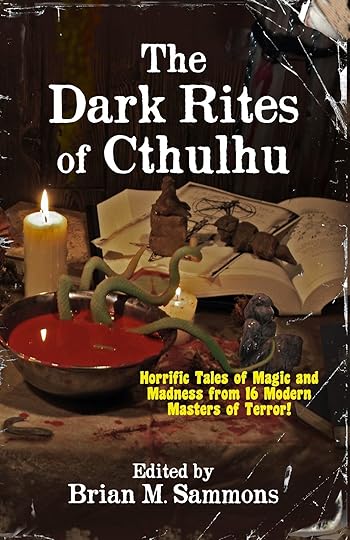
I'm pleased to announce the publication of my tale "The Half Made Thing" in the anthology The Dark Rites of Cthulhu , overseen by red-hot editorial force Brian M. Sammons, which is notable as the launch project of April Moon Books , a new speculative fiction indie press founded by writer and freshly minted publisher Neil Baker, whom I interviewed below.
In addition to the honor of joining the launch of April Moon, this is a special occasion for me personally, as not only will this be my first time working with Neil, who has been so lovely throughout and is sure to have a long career in this business, but "The Half Made Thing" also marks my first bit of published poetry as a fully functioning, semi-clearheaded adult (I don't count the snarky twaddle I published in Omaha's own groundbreaking indie mag Sound New & Arts back in college). The story actually began as a poem/chanty, with the prose growing out of the verse. As such, upon completion of the tale, I submitted both, as they tie together, and Brian was kind enough to accept them as a package, which now serves as the closing chapter in The Dark Rites of Cthulhu, finishing off an anthology of Lovecraftian tales dealing with themes of magic, sorcery, and dark conjuring, written by some of the premiere names working in Mythos fiction today.
So, give the interview below a read, pick up The Dark Rites of Cthulhu via either Amazon (Kindle edition going for only $2.99) or straight from the April Moon source, and hunker down with a bit of necromancy this spring. As the days get longer, the nights become more meaningful, as all the best things happen under the cloak of darkness, or even just under the cloak.
_________________________________________________________________________
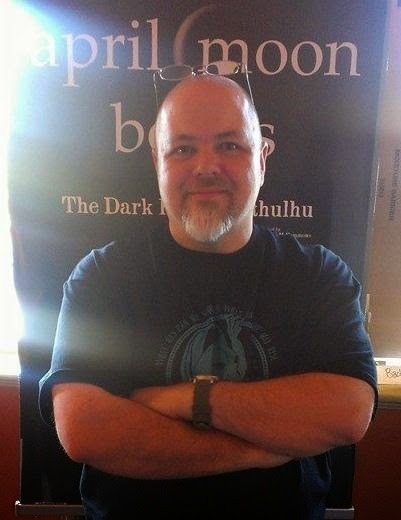 Neil Baker, Galactic Overlord of April Moon Books
Neil Baker, Galactic Overlord of April Moon BooksTC: Give us a little bit of background on yourself, and on April Moon Books. As a Writer, Editor, and now Publisher, what moved you to found your own small press?
NB: Here’s the thing. I've always been a writer, but I've never allowed myself to write. As a modern-day Renaissance Man (i.e. work-shy fop), I've flitted from job to job; among other things I've been a prop maker, a dinosaur builder, a graphic designer, a teacher, a filmmaker and animator. I've chased a thousand mad dreams, and caught one or two, and at the core of all of my career choices has been the story. A few years ago, when I was coming down from a frenetic 4-yr production (a stop-motion short that is still on the festival circuit), I found some old stories that I had written many years ago. They were crude, but fun, and they prompted me to explore possible outlets. By chance, I saw an open call on Facebook for ‘steampunk infused Mythos fiction’, and so I wrote a tale which was influenced by Mark Gatiss’ Lucifer Box series of novels.
The Devil’s Mudpack was a romp and a half, but it didn’t make the cut. However, the editors, a couple of ne’er-do-wells named Sammons and Barrass, liked it enough to invite me to write for ‘Atomic Age Cthulhu’ – and Little Curly was accepted. In fact, one of them remarked that my story had moved him to tears. This was the kind of thing my dwindling ego needed to hear, and so I threw myself into story-writing with gusto. I got another couple of short horrors into two more books and then shortly after that my next story, The Turtle, was accepted into World War Cthulhu, and I realized that I could hold my own with the big kids. At the same time, I knew that selling a short story here or there wasn't going to keep my own kids in diapers, and so I decided to take the plunge, to invest some time and money into starting my own publishing house in order to create the kinds of books that I would love to read, while possibly making a bit of dough on the side.
How hard could it be?
I’m sure you've recently found the answer to that question. In this vein, what are some the challenges you have faced in building your own publishing company? Did anything surprise you?
The biggest hurdle I am facing while building my empire is me. This is a one-man show, with the occasional bit of reading done for me by good friends and a supportive wife, all of whom know a thing or two about story. Unfortunately I’m having to assume all the roles normally delegated in any given company, and you can bet your bottom dollar that ‘creative’ Neil trumps ‘business’ Neil Every Single Time.
I am never happier than when I am editing a great story, designing a book cover or sculpting a promotional gift. However, there is a sadly neglected XL spreadsheet that is crying to be updated, forms to fill in, Important Things to do, that force me to grit my teeth and get them done. This will get better as time goes on, but I still feel I have yet to hit my stride.
How did you hook up with editor Brian Sammons for The Dark Rites of Cthulhu? Did he approach you with the project, or was it the other way around?
Ever since working with him on ‘Atomic Age’ and ‘World War’, I have enjoyed a great rapport with Brian as we gelled over movies and other shared passions. One day, I happened to remark in passing that I was thinking of starting up a publishing company. My words were like catnip to the feline Sammons, who pounced on my message board, lighting it up with an idea he had been bouncing around in his head. As the concept tumbled out via emails I made the decision to go for it, knowing full well this was a huge risk. To launch my company with a high profile anthology like this threw up many pros and cons. I knew I wanted to do this book, to create something that could sit on the shelf next to a Chaosium title or DRP novel, and I also knew that Brian had the connections to the talent required to make it happen. I knew the stories were going to be the best I could possibly hope for if I wanted to make an impact, but I was also acutely aware that I wasn't going to get all this for free. I had to make a commitment and so, after discussing it with my long-suffering better half, said yes.
What can readers expect when they crack open The Dark Rites of Cthulhu?
 Firstly, I think it’s going to come as a bit of a shock to anyone unfamiliar with the authors just how exceptionally good the stories are. The contributors are all writers at the top of their game, well respected, award-winning, and best-selling. I have nothing but respect for small presses and anyone who self-publishes, but it is no secret that the quality of fiction is quite alarmingly varied. The decision to go with the sixteen authors in my book has meant that the reader will be dipping into top notch writing. It’s a benchmark I hope to maintain.
Firstly, I think it’s going to come as a bit of a shock to anyone unfamiliar with the authors just how exceptionally good the stories are. The contributors are all writers at the top of their game, well respected, award-winning, and best-selling. I have nothing but respect for small presses and anyone who self-publishes, but it is no secret that the quality of fiction is quite alarmingly varied. The decision to go with the sixteen authors in my book has meant that the reader will be dipping into top notch writing. It’s a benchmark I hope to maintain.As for the content, I believe that Brian’s original concept, that of the intimate meddling of humans in the dark arts of the Mythos (as opposed to full-scale battles between mortals and Old Ones), sheds new light on Lovecraft’s creations. The acts depicted in this book are born from obsession, a dangerous thirst for knowledge and the craving of power, and it is no surprise that the people who immerse themselves in this insidious sorcery soon come undone, both mentally and physically. Not only that, but one of the stipulations for the story submissions was that the authors should steep their ideas in the lurid stylings of old Hammer films, something they have all embraced.
You just returned from the H.P. Lovecraft Film Festival in Portland, and by all reports, sold out your complete stock of The Dark Rites of Cthulhu. How was attending your first festival/con as a publisher, and what was the reaction like to the anthology?
It was a tremendous experience, and I am grateful that I finally decided to go. When it was suggested to me (by DRoC author Tom Lynch) I’ll admit I balked at the potential cost of travelling to Portland from Toronto. What with the flight, accommodation and other expenses, I would tip my original marketing budget well over the edge. However, a brief email correspondence with Gwen Callahan, one of the festival organizers, convinced me that this was too good an opportunity to miss, and so I made all the necessary arrangements and hoped I hadn't dug myself a deep hole.
As it turned out, my fears were unfounded, as I sold enough books on the first day to pay for my flight, and was actually able to pack up early on the final day having sold every copy, plus promotional sculptures and t-shirts I had made. The very public launch of The Dark Rites had been a huge success and, through chatting with customers, I learned that there was indeed a thirst for Lovecraftian tales steeped in magic and sorcery. I went all out on the promotional materials, ensuring that every visitor went home with at least a postcard or magnet whether they bought a book or not. I also printed new promotional posters every morning to keep my table fresh and informative, not least being the extraordinary testimonials from Cody Goodfellow, Wilum H. Pugmire and David Conyers, all procured by Brian. Then he produced the coup-de-grace, a new testimonial from Laird Barron, which I hastily printed up and which was responsible for a clutch of sales by folks who muttered, “Well, if Laird likes it…”.
On the last day of the festival, I was delighted to announce that sales of the physical book had hit 100, likewise for the Kindle edition, all in the first week of sales. This is a fantastic start for my company and, although I am acutely aware that I have a long way to go, I am cautiously optimistic about April Moon’s chances.
As a Publisher, what advice can you give to writers seeking to place their work in anthologies such as yours, or in selling their longer works (novellas, novels)? What is April Moon Books specifically looking for from writers/artists?
As I have previously mentioned, I want to publish books that I would enjoy. By that reasoning, it is safe to assume that my influences growing up shape my desires, and so it would be a good idea to take a good hard look at the following entities, for these are the ingredients that I like to play with: Hammer films, Dr. Who (old stuff), Star Wars and other space operas, Amicus films, Edgar Rice Burroughs, Quatermass, Fredric Brown, Pan books, 2000 AD, monsters (of any shape or size), crimson blood and heaving bosoms.
What’s next for April Moon Books? What are the long-term plans for your company?
The promotion for The Dark Rites of Cthulhu will continue throughout the month of April, with several major stages in the works including magazine campaigns, review campaigns and paid social media advertising. Then, at the end of the month, I will resume editing duties on my second book; a new anthology under my ‘Short Sharp Shocks’ banner, AMOK! This book will be a pulpy heap of psychotic, mostly contemporary horror dealing with persons or things that go on mental and physical rampages. Such is the nature of the beast that I have a pair of ‘office worker’ stories bookending the anthology, with a few (original) zombie tales in the mix, vampires, serial killers, giant alligators and monstrous pigs. It will be shocking, amusing and, ultimately, a lot of fun. A typical April Moon book. If that title does well, then I am looking further ahead to Short Sharp Shocks Volume 2: Stomping Grounds. You can guess the theme for that one.
Then I also have a children’s book in the works that I have written, and I have just secured the talents of an illustrator who I greatly admire and who will be working remotely with me from her home in Japan. I’m very excited for this book, not least because I've forced my children into it in a fit of self-serving madness. It’s based on At the Earth’s Core, and I have a follow-up planned that is based on At the Mountains of Madness…
Lastly, I have an author in mind that I hope to tempt into writing for my company. She writes adult fantasy fiction, and I’m intrigued to see what she can conjure up for me. That will be in the form of novellas, with an option to put out a collection.
So, horror anthologies, childrens’ books and eroticism. I think I've covered the bases.
Any closing thoughts? Sartorial advice? Folksy homilies from the Old Country?
I think I've waffled on enough. If anyone has had the gumption to stick with my responses, then I thank you wholeheartedly for your support and interest. No matter what the outcome, this has been a glorious adventure so far, and I am delighted to have seen my social circle evolve in the past few years. If anyone reading this hasn't written before, or for a while, I urge you to go ahead and do it. If it turns out to be rubbish, that’s fine, do it again. At the end of the day you are creating – and that’s what’s important.

Published on April 25, 2014 13:22
March 19, 2014
Audio Fiction News: Short Story "In the Cave, She Sang" Featured in March 2014 Edition of Horror Podcast TALES TO TERRIFY

It's always a trip hearing your written work read by a voice artist. Sometimes it's a complete hit, and a revelation, as an actor can bring out a nuance or detail you didn't really focus on or know existed when writing the story. Sometimes, it can fall flat, with the reader either missing a certain emphasis or rhythm, or the work itself not properly setting it up on the page to be translated by the reader. Either way, it's always very interesting to hear a stranger read one's work.
My story "In the Cave, She Sang" (originally published in the ill-fated Aklonomicon ) is featured in the current, March 2014 edition (#114) of the Horror Fiction podcast Tales To Terrify (part of the District of Wonders podcast network), which has one of the best logos this side of Strange Aeons . My story leads off the podcast, followed by a reading of India Drummond's tale "The Reaver."
I hooked up the the TtT crew last May when host, creator, and silky smooth voiceman Lawrence Santoro asked me to send him a story to be read on the show. Looking over my stories already published, I figured "In the Cave, She Sang" - a Charlie Manson meets Cosmic Horror in Death Valley on New Year's Eve 1968 sort of joint - might work best, as it was written as an ode to the protagonist, the era, and all those beautiful Beats who set the world on fire a decade before The Family tried to do the same, albeit using different matches. This might have been the second or third short story I had ever written, but the few reviews it had received in the past had all been positive (including one relayed to me from a certain Northampton writer/shaman/eternal winner of Beard Wars). So, I sent it off, and - because my brain is composed mostly of Swiss cheese - had honestly forgotten about it over the last 10 months, until Lawrence PM'd me last week, letting me know that it would go live on Friday.
Such an unexpected surprise!, made all the more wonderful when I actually heard the reading by Stephen Kilpatrick, who laid out the prose in a fantastic voice - all low register and musical deadpan. Depending on the story (and the genre), my writing can sometimes be a bit, ah... "verbally vigorous," especially the older stuff and especially when read aloud. But Stephen killed it. I'm very thankful to him for his time and talents, and to Lawrence for taking on this tale that is pretty graphic in its salty language and sexual imagery (pretty rare for my stories, especially the latter). Indeed, Lawrence describes "In the Cave, She Sang" in his entertaining intro as "using explicit language and sharply disturbing ultra, graphic human/goddess sexual congress imagery"; while Stephen wrote the following in his blog posting about his work in the March issue of Tales To Terrify:
This week’s show features two stories that I narrated as part of my introduction as editor for the podcast, it includes T. E. Grau’s “In The Cave, She Sang”, which contains several quite grown up passages. So, if you’re not a fan of rated R content, you might want to skip this one. Some of the passages are fantastically gritty: "Like an orphan sold for a pitcher of beer."
Listening back through the narrative without having the roadmap of familiar words arranged in a familiar way on the page to guide me, I am reminded of how my writing has changed over the last four years, moving from a more dense style to something more lean and hopefully no less mean. I feel there are some decent lines in the piece, but sometimes - even with the purposely stylized way the story was told - the language founders in a bit too much muck. But overall, I like the tale, and love the reading, and am very happy and honored to be featured in Tales To Terrify, who also have a really kick ass print anthology that you need to pick up right... about... HERE.
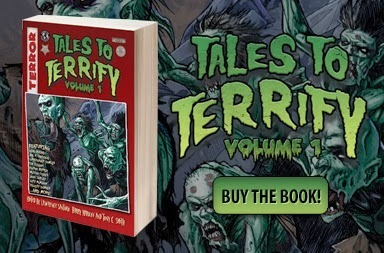
Published on March 19, 2014 18:06
March 11, 2014
Publishing News: 'White Feather' Accepted for Publication in WORLD WAR CTHULHU, Edited by Brian M. Sammons & Glynn Owen Barrass for Dark Regions Press - Indiegogo 60% Funded
 Cover Art by Vincent Chong
Cover Art by Vincent ChongI am very excited to announce that my story "White Feather" was accepted for publication in the anthology World War Cthulhu: A Collection of Lovecraftian War Stories , edited by Brian M. Sammons & Glynn Owen Barrass for noted publisher Dark Regions Press.
"White Feather" is a period piece set primarily in New London, Connecticut during the American Revolutionary War, and centers on the desperate measures a Privateer captain takes to regain his good name and honor after finding himself the lone survivor of his entire crew, which was brutally slaughtered during the return trip from a raiding party along the coast of Nova Scotia. As a history buff, I had a ball researching the era and the area, and then dumping in a healthy dose of Cosmic Horror.
The story joins an impressive line-up of fellow contributors, which will be detailed below via the magic of cutting and pasting boosted text from the DRP website. Before we go into that, it is incumbent upon you, gentle reader, to prance your silly ass over to the World War Cthulhu Indiegogo campaign currently chugging along at full steam, eating up much coal and sweat as the funding goal has now risen to over 62% complete with less than 40 days to go. Don't be left out, facing the slings and arrows and plasma bombs alone. And certainly don't let these fantastic stretch goals and pledge perks go unrealized, several of which include me - yours goddamn truly - tuckerizing you into "White Feather" itself (only six more spots left), killing you in an upcoming story or book (only four spots left), or even writing an original Lovecrafitan story with you as protagonist - or the antagonist, if you prefer (eight spots left). Put my ass to work. Force me to shame you, kill you, make you dance, or place you in battle either for or against the cold cosmic forces at work in our multiverse. Become a part of the Mythos, by my pen or those of my esteemed colleagues. Opportunities like this are fun, and not readily available every day. Seize the day, fear the night, and lay down your lucre.
War is coming, from within, and from without. But it is coming, and once it does, nothing will ever be the same again.
Check these illustrations by the great M. Wayne Miller which have already been unlocked by backers so far (getting to $13,000 - a very real possibility - gets the book eight more):

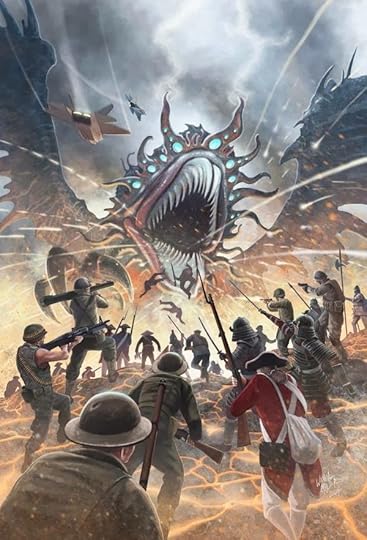
World War Cthulhu: A Collection of Lovecraftian War Stories contains 19 stories of war and horror from the mythos of H.P. Lovecraft written by many of the top names in Lovecraftian fiction:
Introduction
"Loyalty" by John Shirley - In Loyalty, John Shirley tells a tale of a stranger in a strange land, a man out of time that awakens to a future where horrors unexpected battle mankind. A deal with a tentacled devil is required to save humanity, but will we really be saved?
"The Game Changers" by Stephen Mark Rainey - The Vietnam War, a journey through a jungle of madness and death. What are brave men to do when their very own superiors have given their loyalty to things that should not breathe the same as us?
"White Feather" by T.E. Grau - This is a tale of a heroism without reward, of a life ground down by the horror of seeing too much, knowing too much. During the War of Independence, a Privateer captain fights for his jaded soul’s redemption, or perhaps, destruction.
"To Hold Ye White Husk" by W.H. Pugmire - A dreamlike scene of men stranded at sea, the terror of war replaced by the horrors of slow death and starvation. Yet there is a beauty in horror, and a mysterious amulet leads these sea battle survivors to face the unimaginable.
"Sea Nymph’s Son" by Robert M. Price - A tale describing the Legend of Achilles, epic, bloody battles and the story of monstrous titans and a hero that needs to remain masked for the sanity of all. The fate of Troy is unimaginable, unexpected, but somehow apt.
"The Boonieman" by Edward M. Erdelac - A return to the rank jungles of Vietnam, where soldiers allied with local villagers discover ancient secrets far worse than the losing war they have been waging. The Boonieman Cometh, and the jungle quakes.
"The Turtle" by Neil Baker - Another return, to America during the War of Independence. In a war at sea, a man pilots an ingenious device against the British Navy. Other things lurk under the water however, things for the sake of sanity he would rather remain there.
"The Bullet and the Flesh" by David Conyers & David Kernot - A modern day tale of horrors perpetrated by man against man. The use of child soldiers in Zimbabwe are not the worst things to be encountered as lives are given less worth than shiny baubles from the earth. Evil men mess with things unpredictable, and brave men such as Major Harrison Peel (from Cthulhu Unbound 3) are forced to fight for justice and balance.
"Broadsword" by William Meikle - Two soldiers mountaineer across mountain ranges during WWII, in an attempt to deal with a threat against the allies and the hated German’s. The threat is otherworldly, the solution bringing difficult choices to those that would prefer peace to annihilation.
"The Ithiliad" by Christine Morgan - We return to Troy, where humans and things part-human worship decadent horrors. Epic battles are forged spilling blood and ichor. We are as playthings to the gods in this tale, and again, Troy is to meet an unimaginable fate.
"The Sinking City" by Konstantine Paradias - Warring factions use an unwitting man as their puppet in this tale, detailing a sinister journey to R’lyeh. The inner war, the fight of a man to retain his identity and his sanity, proves just as important as the one beyond his violated body.
"Shape of a Snake" by Cody Goodfellow - The Spanish-American War is the setting here, Lt. Col. Roosevelt and his men encountering a strange group of people at a hotel. They have faced the horrors of war, but what about the ancient secrets they’re about to encounter here?
"Mysterious Ways" by C.J. Henderson - A Roman Centurion makes a choice about his immediate future, a choice made by making a deal with a many-faced god. The choice has repercussions for the centurion, and Humanity, for millennia to come.
"Magna Mater" by Edward Morris - World War One, France, a collection of arcane books and a place of mysteries. A man called William Hope Hodgson experiences these mysteries in a personal apocalypse of discovery.
"Dark Cell" by Brian M. Sammons & Glynn Owen Barrass - A contemporary tale where two unlikely heroes, an American CIA Agent and a criminal Army Intelligence Officer, work together to discover what the IRA wants with a sinister tome and what reading that book will mean to the people of London.
"Cold War, Yellow Fever" by Pete Rawlik - During the Cuban Missile Crisis, a covert group led by a Terrible Old Man sets off to investigate bizarre events and a strange signal. The city they encounter once resembled an earthly city, its inhabitants too.
"Stragglers from Carrhae" by Darryl Schweitzer - Two Roman Soldiers, last survivors of a bloody battle, set off on a journey across Asia minor to renew their lives. The companions they find on their way are impossible in a sane world, and madness seems the only explanation and the best refuge.
"The Procyon Project" by Tim Curran - A war veteran haunted by the dreams of his past, guards something for the government, something that begins to haunt his waking hours. Some things are best left alone and undiscovered, things that are not meant to be guarded by fragile humans.
"Wunderwaffe" by Jeffrey Thomas - On an alien world, in a sprawling city called Paxton, or Punktown, to its residents, war, magic and religion are brought together in a hellish way. Colonial Forces are summoned there to fight something, something they are completely unprepared for.
An Indiegogo campaign has been launched to to fund this project, and hopefully expand it by adding on more stories/authors, as well as an array of other perks.
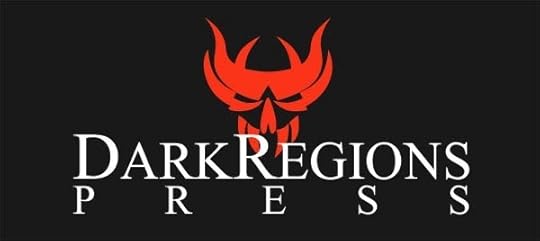
Published on March 11, 2014 18:45
February 20, 2014
Editing News: Strange Aeons Lost Issue #13 Found, and Now Available to Backers of the 2014 H.P. Lovecraft Film Festival - Portland
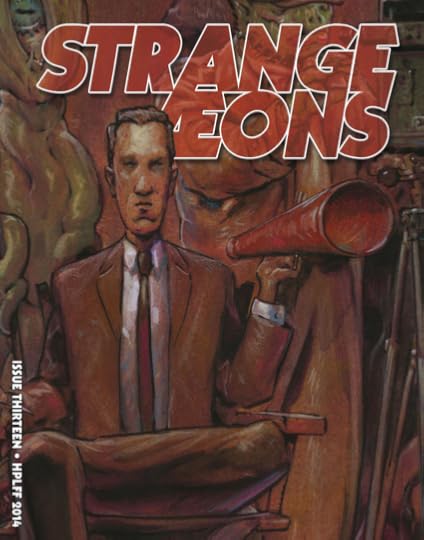 Cover art by Mike Dubisch
Cover art by Mike DubischTime certainly does fly, doesn't it? It must, as I have now served as Fiction Editor of Strange Aeons magazine for a little over two years, and have enjoyed every goddamn second of it. Truly, it has been an incredibly fun and rewarding experience sourcing stories and working with amazing writers, and then feeling the pride of releasing those words and images and nightmares out into the ether. The only down side has been the loathsome task of sending out rejections for great stories, as featuring only one piece of fiction per issue means the culling staff is firm and unforgiving.
While the one story per issue will continue, I'm proud to announce that we've just sewn up our very first ALL FICTION issue of Strange Aeons, which will be released as our "lost" Issue #13, featuring 13 writers in 76 pages, and is only available to those who pledge $10 and above to the 2014 H.P. Lovecraft Film Festival - Portland through their Kickstarter campaign . BUT YOU ONLY HAVE FOUR (4) DAYS LEFT, as this whole shebang closes down Monday, February 24th at 11:59 pm PST. So get on your Huffy and haul ass before your access to this amazing special edition will be closed.
Strange Aeons Lost Issue #13 will be our largest issue yet, by far, and is made up of a mix of new, unpublished stories, re-printed tales new to the pages of the mag, and stories published under my tenure up to the present day. Basically, if you missed any of the past issues going back to Spring 2012, worry not, silly scoundrel, you can get them all here, along with some fantastic fresh meat never before read by human eyes.
So, at long last, here is the ToC for Strange Aeons #13, listed in order of appearance:
"Welcome to the Reptile House" by Stephen Graham Jones
"The Impossibility Dissection" by Stuart Young
"Sunset on Megalopolis" by Jeffrey Thomas
"De Profundis" by Daniel Mills
"There's No Light Between Floors" by Paul Tremblay
"Insides Out" by Gary McMahon
"Folie a Deux" by Ross E. Lockhart
"The Astral Mask" by Richard Gavin
"You Are What You Eat" by Scott Nicolay
"Beautiful" by John Claude Smith
"Remains" by Orrin Grey
"Dog Will Hunt" by Ives Hovanessian
"Go, Go, Go, Said the Byakhee" by Molly Tanzer
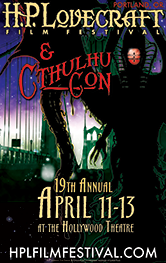 This is a choice line-up, folks. An A-Team, of sorts, sans mohawk and overzealous layering of gold chains (although Jeffrey has been known to go about 9-10 deep with the platinum and ice). I'd put this group up against anyone in any antho or fiction journal coming out this year, and bet the house on the W.
This is a choice line-up, folks. An A-Team, of sorts, sans mohawk and overzealous layering of gold chains (although Jeffrey has been known to go about 9-10 deep with the platinum and ice). I'd put this group up against anyone in any antho or fiction journal coming out this year, and bet the house on the W.So don't tarry, terry, or even teri. Go support the good folks who are putting together the HPL FF PDX, and in the process, you'll get a collection of Weird/Cosmic/Horror/Dark Fiction that will amaze and delight your friends and colleagues, while gravely disappointing our parents. Isn't that what life is all about?
And now the (semi)official stuff, from our website, and a snazzy vid below:
ISSUE # 13
Through incredible luck (and just a bit of eldritch wizardry) we've manged to secure a way for you to acquire what is now known as the 'lost' Issue 13!
As some of you may know, as 2013 drew to a close we began working on Issue 13. Through an unfortunate and unforeseen accident here at the SA offices, all of our files relating to the issue fell through a dimensional vortex and were feared lost.
Like any respectable Innsmouth hotel, we decided to skip Issue 13, and let it lie dreaming wherever it ended up. After collecting ourselves and counting our lucky elder signs that only the poor mailroom boy was lost along with the issue, we continued on and began working on Issue 14.
Miraculously earlier this month, a colleague of ours managed to track down the missing issue through means we are not at liberty to discuss. Suffice it to say that we owe you one...thanks, Erich!
The gracious folks at the H.P. Lovecraft Film Festival & CthulhuCon have offered to help us reconstitute the recovered pages, so for a very limited time, all backers of their HPLFF 2014 Kickstarter campaign can upgrade their pledge and our ALL-FICTION Issue 13 can be yours UNTIL THE END OF THIS MONTH.
This will be a special fiction issue including the talents of Ross E. Lockhart, Jeffrey Thomas, Scott Nicolay, Gary McMahon, Stephen Graham Jones, Stuart Young, and many others. It also features a wonderful cover by Mike Dubisch and interior illustrations by Allen K., Lee Davis, and Nick Gucker!
The best part is how easy it is to add Issue 13 to your collection. For as little as $1, you can become a backer of the HPLFF Kickstarter, and then simply add on the $10 upgrade amount to reserve your copy. This issue will only be available during the Kickstarter campaign, so make sure you grab your copy while you can! Please watch the video below to learn more about the HPLFF and pledge your support for the best Lovecraftian festival on earth!
Published on February 20, 2014 19:30
January 19, 2014
TC Television Review: The Top Five Episodes of the Alfred Hitchcock Hour, by Amber Doll Diaz. Ep. 5 - 'The Jar'
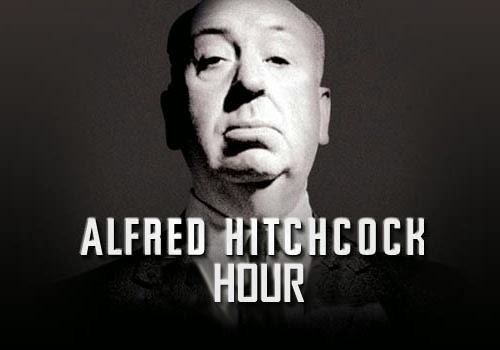
A Review of “The Jar”, Alfred Hitchcock Hour.Amber Doll Diaz
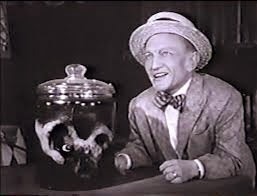 Episode title - “The Jar”
Episode title - “The Jar”Director – Series - The Alfred Hitchcock Hour
Broadcast date - 14 February 1964
Teleplay by - Based on - “The Jar” by Ray Bradbury
First print appearance - Weird Tales November 1944
Good Evening. Within the first five minutes of this popular installment of Alfred Hitchcock Hour entitled “The Jar”, you will suppose you are witnessing an account which merely pries at the mystery of a grim sideshow extraordinaire. Instead, it assumes a much more psychosomatic cast as it chronicles the nightmarish realities of a simple country life unexamined, a marriage not infallible, and the death of innocence. Originally penned by Ray Bradbury, and featured in Weird Tales in November of 1944, “The Jar” was later reprinted in Hitchcock’s anthology Fear and Trembling in October 1963. Without surprise, the episode garnered teleplay writer James Bridges an Emmy nomination for Outstanding Writing Achievement in Adapted Drama the same year. Lacking the win, “The Jar” regardless remains stellar in its effectiveness, certainly rivaling even the best of The Twilight Zone, a deservedly decorated feat all on its own.
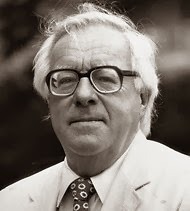

Charlie Hill, played by
Many of the townsfolk and neighbors Charlie shares his simple life with are entranced, and flock to his home by nightfall to have a fellowship centered on guessing what exactly is in the jar. In an interesting plot point, each citizen gazes into its ghoulish waters and begin to vent while projecting their own personal misfortunes, fears and sorrows upon the jar. For a time it is something therapeutic for all who attend, especially Charlie, who is grateful and relishes his find, but not for the jealous and disgusted Thedy, who fumes in a corner.
This disturbing, atmospheric episode featured a fairly impressive cast, with
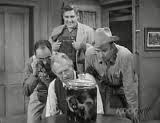 Much like the backwoods low-life social commentary of Stephen King’s first novel
Salem’s Lot
, "The Jar" affords viewers a glimpse into the existence of darkness in prosaic men. Evil often goes hand-in-hand with banality, be it a lifestyle or mindset. Charlie and Thedy lead lives of such uneducated mundanity and longing, which ultimately drives them hellwards. Fans of Hitchcock seeking their noir fix will delight in the star-crossed pair’s mutual internal corruption as well as the deep disillusionment Charlie feels – a function of his lowly communal standing.
Much like the backwoods low-life social commentary of Stephen King’s first novel
Salem’s Lot
, "The Jar" affords viewers a glimpse into the existence of darkness in prosaic men. Evil often goes hand-in-hand with banality, be it a lifestyle or mindset. Charlie and Thedy lead lives of such uneducated mundanity and longing, which ultimately drives them hellwards. Fans of Hitchcock seeking their noir fix will delight in the star-crossed pair’s mutual internal corruption as well as the deep disillusionment Charlie feels – a function of his lowly communal standing.“The Jar” is a masterwork of character development, but mostly where it doesn't really count. It seems the more minor townspeople were given further reflective monologues than the three leads, including a cringe-worthy scene in which a character sinks in quicksand while a slave-like farm hand drones on and on about what he believes the innards of the jar to be, rather than assisting the victim at hand. I am certain this was meant to be an attempt at generating suspense, but it more irritated than captured me. Not to impugn his work too harshly, but perhaps if Hitchcock had directed in place of Norman Lloyd, (a fantasy, I know, with only 17 out of 268 Alfred Hitchcock Presents episodes directed by him, and but one Alfred Hitchcock Hour episode: “I Saw The Whole Thing” starring John Forsythe) this scene might have properly intensified the overall tension.
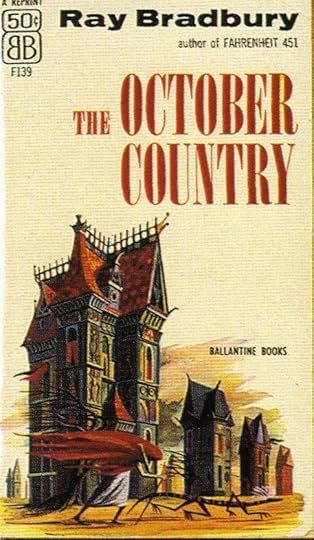 On a side note, happily I have found through research that the actual jar prop remains perfectly intact (albeit dusty) and never flitting, still is sitting, still is sitting upon a collector’s nightstand. In my estimation, Bradbury's original short story is a crowning achievement of psychological horror, and supersedes this adaptation in terms of excellence as more than a matter of principle. I remain spellbound by his nebulously twisted imagery and often philosophical ability to describe a physical object of horror. However “The Jar”, when re-published in his 1955 collection The October Country was tossed to and fro by contemporary reviewers. The critical reception of the story was polarized when articulated by Carlos Baker for the
New York Times
, who harshly cataloged Bradbury as “a gifted writer making a play for the designation of the poor man's Poe…” and with
Time Magazine
calling him “the arrived monster-monger” and “fit replacement for August Derleth, eldritch statesman of the well-informed witchlover”. Typically I’d begin to lead you astray, Reader, with my absolute opinion on the silly matter of “replacements” for August Derleth, but for you I shall leave that door ajar.
On a side note, happily I have found through research that the actual jar prop remains perfectly intact (albeit dusty) and never flitting, still is sitting, still is sitting upon a collector’s nightstand. In my estimation, Bradbury's original short story is a crowning achievement of psychological horror, and supersedes this adaptation in terms of excellence as more than a matter of principle. I remain spellbound by his nebulously twisted imagery and often philosophical ability to describe a physical object of horror. However “The Jar”, when re-published in his 1955 collection The October Country was tossed to and fro by contemporary reviewers. The critical reception of the story was polarized when articulated by Carlos Baker for the
New York Times
, who harshly cataloged Bradbury as “a gifted writer making a play for the designation of the poor man's Poe…” and with
Time Magazine
calling him “the arrived monster-monger” and “fit replacement for August Derleth, eldritch statesman of the well-informed witchlover”. Typically I’d begin to lead you astray, Reader, with my absolute opinion on the silly matter of “replacements” for August Derleth, but for you I shall leave that door ajar.
Published on January 19, 2014 21:26
January 16, 2014
Publishing News: Short Story 'Clean' Published in New Monthly Literary Journal The Fog Horn, Now Available Globally via iTunes App
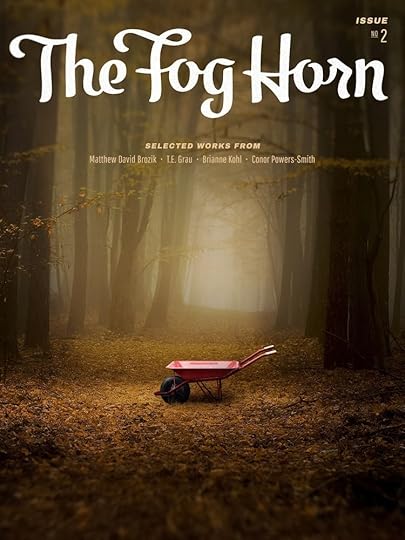 Issue #2 Cover by Bryan Flynn
Issue #2 Cover by Bryan FlynnI'm incredibly pleased to announce the publication of my short story "Clean" in Issue #2 of the exciting new publication The Fog Horn , a monthly literary journal described as "curated short stories for the modern reader."
I love the way that sounds, and the emphasis on care and quality conveyed by that statement. And judging this magazine by its (actual) cover, combined with the way they have treated me throughout the submission, acceptance, and publication process, one is quickly convinced that publisher Quinn Emmett and his crew at The Fog Horn are living up to their promise on the page while also prioritizing the treatment of their authors in general.
I mention the latter as this is, without question, one of the best markets going today, in terms of global distribution reach (something-something about an iTunes app), quality of layout, and especially compensation. None of us (or very few of us, I should say) write Weird/Horror/Dark Fiction for the money, but it is quite refreshing when a publisher pays what I think authors are worth. Writers are always the first martyrs to jump in front of the spendthrift bullet, volunteering for self immolation by offering to ply our trade for free, just as long as the finished product sees the light of day. While this is noble (and something I have done in the past, and will probably continue to do if the situation calls for it), very few other creatives do this in the artistic marketplace. We scribbling scribes must be a self deprecating lot, or just suckers. But whatever the reason, it is - as noted above - a nice change of pace to get paid decent money for doing the work we love. A blessing, to be sure, but one that shouldn't be as rare as Southern California rainfall.
As for the story itself: I don't think I'm alone in that writers like/enjoy some of their own stories better than others. Sometimes, in the journey from the initial spark of inspiration, to the mulling process, to the final pressing of the letters into the clay, a story just doesn't turn out the way you wanted it to (much like the structure of that sentence). "Clean" is one of my favorite pieces. It ended up exactly the way I envisioned it, and I like the pared down quality of the prose, which up to the time of its completion, was a bit of a departure for me in terms of style, and also tone, and even genre, marking an evolution in my writing, however small. It's set in the real world, or very close to it. It could happen. It does happen, but maybe not in the same exact way.
Regardless, I am happy with "Clean," and very excited to have it out living in the wider world. Please stop by The Fog Horn website and/or blog, even if you don't purchase a copy of Issue #2, to check out a literary journal done right, and a preview of what will most likely be the future of literary publishing, as more and more readers move away from traditional timber and ink journals and books, and embrace the popularity of e-readers and page turning by phone.
Oh, and for a bit o' fun, get a load of my illustrated self, done by the talented The Fog Horn Art Director Bryan Flynn (creator of the gorgeous cover above), who manages to make me look grizzled, smug, and dissipated all at the same time, which pretty much sums up the man:

Published on January 16, 2014 17:20
January 14, 2014
TC Editor Interview: Brian M. Sammons and Glynn Owen Barrass Discuss Release of Lovecraftian Cyberpunk Anthology 'Eldritch Chrome,' Now Available from Chaosium, Inc.
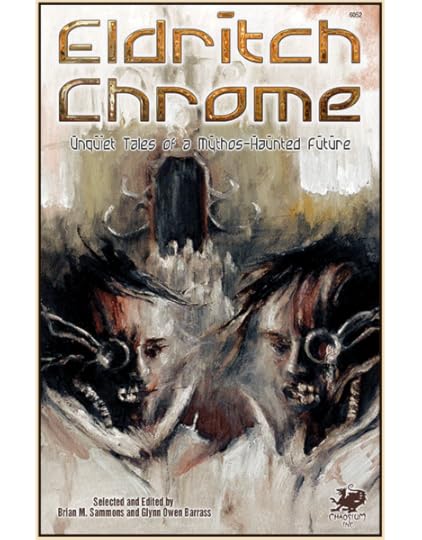 Cover art by Daniele Serra
Cover art by Daniele SerraI'd like to share a recent interview I conducted with authors/editors Brian M. Sammons and Glynn Owen Barrass, on the occasion of the release of Eldritch Chrome , an anthology bristling with 18 tales of Lovecraftian Cyberpunk penned by some of the finest names working in Speculative Fiction today.
If you like your punk cybernetic, your future dystopian, and you tentacles biomechanical, this is the book for you. Pull up tight your vinyl sheets, strap on your kinked out breathing apparatus, and settle in for an unsettling read.
Please enjoy my chat with Brian and Glynn, and thanks to the lads for sitting down with The Cosmicomicon.
___________________________________________________________________________
First of all, let’s set the table and give a little background on each of you.
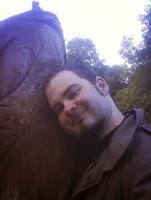 Glynn: I took up writing rather late I suppose, in my late 30s, but have always been a fan of the written word. Since I first read Lovecraft, at the age of 13, I always wanted to be a writer, and when I graduated university, again late in life, I took pen to paper and began in earnest. Lovecraft, Ramsay Campbell, Raymond Chandler and the Cyberpunk genre are heavy influences in my work. I’ve written over a 100 short stories, most of which have been published in America, England, and Japan.
Glynn: I took up writing rather late I suppose, in my late 30s, but have always been a fan of the written word. Since I first read Lovecraft, at the age of 13, I always wanted to be a writer, and when I graduated university, again late in life, I took pen to paper and began in earnest. Lovecraft, Ramsay Campbell, Raymond Chandler and the Cyberpunk genre are heavy influences in my work. I’ve written over a 100 short stories, most of which have been published in America, England, and Japan.Brian: I've always been a story teller and that’s why I started running role playing games as a youngster. It allowed me to make up and tell tales to my friends. So as a RPG nerd and a lover of all things horror, I started writing for the Call of Cthulhu RPG in the late 1990s. I then took a long hiatus (not by choice) and when I returned to my keyboard, I started focusing on fiction. While my mainstay has always been horror, I have dabbled in many subgenres such as Lovecraftian, weird, splatter, and I have dabbled in sci-fi, action, and fantasy. I still do game work today and I am currently working with a film company on the screenplay for one of my stories they have optioned to turn into a movie and that’s a real kick.
You both write as well as edit. Do you value/enjoy one over the other?
Glynn: Both have their thrills, and I enjoy editing greatly as it gives me a chance to read awesome fiction! Creating fiction is excellent too, the process that goes into bringing a story to life, so this is a tough question. Right now – I enjoy creating a little bit more than editing, but that may change depending on what I’m working on.
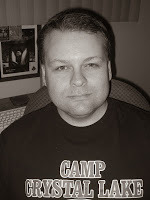 Brian: I also prefer to write, because I have that insatiable need to create and tell stories. That said, I do really enjoy editing anthologies and I seem to keep adding more editing projects to the ‘to do’ pile every day. I think I like doing them so much because then I can make the books that I would want to read that no one else seems to be doing. It is a lot of work, and it’s never fun when you have limited space in a book and twice that in great stories to choose from. Rejecting good authors is easily the thing I hate most about being an editor. But to build a book from the ground up, from the initial concept, to selecting all of its contents, to doing all the finishing touches, well that’s what makes all the hard work worth it.
Brian: I also prefer to write, because I have that insatiable need to create and tell stories. That said, I do really enjoy editing anthologies and I seem to keep adding more editing projects to the ‘to do’ pile every day. I think I like doing them so much because then I can make the books that I would want to read that no one else seems to be doing. It is a lot of work, and it’s never fun when you have limited space in a book and twice that in great stories to choose from. Rejecting good authors is easily the thing I hate most about being an editor. But to build a book from the ground up, from the initial concept, to selecting all of its contents, to doing all the finishing touches, well that’s what makes all the hard work worth it.How did you two come together to work on Eldritch Chrome, and from whence did the project arise? Did the anthology originate from inside Chaosium, or did you take it to the publisher and sell them on it?
Glynn: At the time I was writing a lot of crossed genre Cthulhu Mythos/Cyberpunk stories, and I was chatting to Brian about it one day and just asked him: ‘Wouldn’t it be great to do a book as a collection?’ Brian loved the idea, we put the pitch together, and he was straight on to Chaosium with it, on the condition: ‘Sure man, but I have this great Cthulhu/Steampunk idea that we have to do next.’ Chaosium snapped both ideas up, and a few more besides.
Brian: Glynn and I met on the internet and soon discovered that we had a lot in common. One day while kicking around thoughts about books and stories, he came up with the idea for a Lovecraftian horror meets cyberpunk anthology. I had a long relationship with Chaosium thanks to my Call of Cthulhu writing, and I knew they were looking to jumpstart their slumbering fiction line. They were very interested in the book and so we were off and running.
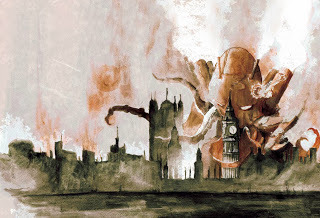
The cover features artwork by Daniele Serra, a favorite of mine and a name well-known in Weird Fiction circles. How did you hook up with Dani as the cover artist?
Glynn: We have admired Dani’s work for a while, and when it came to choosing an artist he was our first choice. It was as simple as sending him an email, as Dani loves painting as much as people love admiring his work.
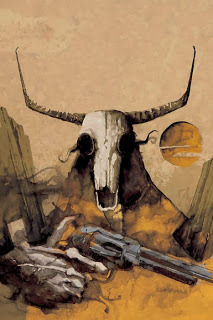 Brian: This was the first time we worked with Dani, but it would not be the last. He also did the cover for this book’s unofficial companion anthology, Steampunk Cthulhu (another collaboration between Glynn and I), and I tapped him again for an amazing cover for an upcoming horror western book called Edge of Sundown. Dani is amazingly talented and just a great guy to work with, so I am sure we will be working with him again and again.
Brian: This was the first time we worked with Dani, but it would not be the last. He also did the cover for this book’s unofficial companion anthology, Steampunk Cthulhu (another collaboration between Glynn and I), and I tapped him again for an amazing cover for an upcoming horror western book called Edge of Sundown. Dani is amazingly talented and just a great guy to work with, so I am sure we will be working with him again and again. How many submissions did you receive? Was the volume and quality of the subs about the same as past projects? What was the most surprising part of the process (if anything)?
Glynn: This was a closed project, so we received about 25 stories. Also this was our first editorial project together but being familiar with the authors already, we knew we would receive quality work.
Brian: Yes, for our first effort together, we decided to go with the authors we were familiar with. Those that we were already fans of. The book that followed it, Steampunk Cthulhu, would be an open call and for that one we read over one million words in submissions! But that’s another story. As for the quality of submissions on Eldritch Chrome, they were all excellent, and perhaps the most surprising part of the process was the number of great stories we got for the book. Of course that meant that many good stories had to be rejected just for lack of space. The one upside to that is that the only best of the best will be found between the covers of Eldritch Chrome, and that makes me very happy.
What can readers expect to find in Eldritch Chrome? To whom would this anthology appeal?
Glynn: Readers can expect to find unique takes on Cyberpunk and the Cthulhu Mythos genres – the writers here really have excelled in their craft. Really, this anthology will appeal to a lot, we’re not just saying that! Fans of Cyberpunk and Cthulhu, of course, Horror fans, and fans of the individual authors are in for a treat.
Brian: The criteria for making it into this book were twofold. The stories had to be great Lovecraftian/Cthulhu Mythos tales, and they had to be excellent examples of the cyberpunk genre. The authors had to have a strong grasp on both types of tales and those that got the thumbs up from us had that in spades. So if you enjoy reading about the creepy, cosmic horrors that H.P. Lovecraft gave to the world, this book will be for you. If you’re a fan of the dark, dystopian future of cyberpunk, then you’ll also dig Eldritch Chrome. If you are a fan of both, as Glynn and I are, then you’ll love the book.
As editors with a (rapidly growing) track record, what advice can you give to writers seeking to place their work in anthologies such as yours?
Glynn: Heh, well... First of all, read the guidelines well as we are very particular about what we’re looking for. Whatever you do, don’t take an old story and just tack on something to make it match the theme we’re looking for – that stands out terribly and we reject stories like that. Also, proof and edit the hell out of your work before sending it to us. Stories with typos every paragraph rapidly get rejected, but thankfully, the authors we go to are so good at their craft we get stories near hand perfect, which makes an editor’s job far easier.
Brian: Read everything Glynn just said again. And then once more. Got that? Good. The only other thing I could think of to add would be for you to know the genre(s) and the type of stories we’re looking for intimately. If we would do an anthology of Robert E. Howard-like, two-fisted adventure tales set in the world of Alice in Wonderland , then you had better know both R.E.H. stories and the fantastic world that Lewis Carroll crated like the back of your hand. Not having a good understanding of the genre(s) we’re looking for is the surest way to get rejected.
What sort of books would you like to see more of in genre fiction, as writers, editors, and readers?
Glynn: That’s a difficult one. Hmm, more books by us for a start (Laugh, Out, Loud). But seriously, there are some great authors out there that deserve a lot more recognition than they have so far, people that work hard, produce consistently quality work, that we hope we are helping to introduce to a wider audience.
Brian: Glynn beat me to the punch, as he often does, with the answer to what books we would like to see published as writers and editors: books by us, of course. As for what books I’d like to see as a reader, well I have a few more ideas for anthologies that I would love to read. That’s how I usually come up with ideas for the books I edit, so I think I’ll keep those idea to myself for right now. In addition to that, anything by my favorite authors or perhaps more of a return to form from some of my old favorites. Stephen King jumps readily to mind in that regard, although I must confess, I still have yet to read his Doctor Sleep .
What’s next for both of you lads, both individually and as an editing team?
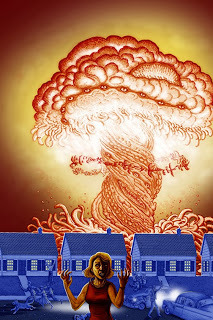 David Lee IngersollGlynn: As a team, there are three more anthologies coming out in the near future: Steampunk Cthulhu and Atomic Age Cthulhu (both from Chaosium) and another project that is sort of a secret that you, Ted, are appearing in with a truly brilliant piece of work. Brian has also written some Call of Cthulhu RPG campaigns that I am proud to have contributed to. Solo-wise, I have a novel being released early 2015, based on the King in Yellow Mythos, and also various Call of Cthulhu and anthology appearances. Brian and I are also soon to be pitching a new Cthulhu Mythos anthology to publishers.
David Lee IngersollGlynn: As a team, there are three more anthologies coming out in the near future: Steampunk Cthulhu and Atomic Age Cthulhu (both from Chaosium) and another project that is sort of a secret that you, Ted, are appearing in with a truly brilliant piece of work. Brian has also written some Call of Cthulhu RPG campaigns that I am proud to have contributed to. Solo-wise, I have a novel being released early 2015, based on the King in Yellow Mythos, and also various Call of Cthulhu and anthology appearances. Brian and I are also soon to be pitching a new Cthulhu Mythos anthology to publishers.Brian: Since Glynn nailed our team-up projects, I’ll just list some of my other efforts. I am currently working on a novel with an author I admire the hell out of, Jeffrey Thomas. I am editing another Lovecraftian anthology called The Dark Rites of Cthulhu for the brand new publishing house, April Moon Books. I will be co-editing another anthology called The Legacy of the Re-Animator (three guesses as to what that’s about) with the very talented writer, Pete Rawlik. I will be overseeing and editing a collection/shared world anthology for my good friend, C.J. Henderson. I have two ‘straight horror’ (read as: non Cthulhu Mythos) anthologies that I will be starting up soon. I am working on a screenplay for a film adaptation of one of my stories. I continue to write short fiction and scenarios/books for the Call of Cthulhu RPG game. And somewhere amidst all that I try to have a life.
Any closing thoughts? Prescient insights? Favorite casserole recipes?
Glynn: Well first of all, thank you kindly for this interview Ted – it has been a pleasure answering your questions. I was thinking of saying something controversial as a closing thought (‘Reptoid Freemasons run the country!’ ‘Recycle your pets!’), but instead I’ll leave you with this: “My brother, knows Karl Marx, He met him eating mushrooms in the people’s park, He said 'What do you think about my manifesto?' I said 'I like a manifesto, put it to the test-o.” (Thank you, Sultans of Ping, F.C.)
Brian: Oh dear, it seems Glynn has gone off his meds again. Well before I give him a hand with that, I will also echo his thanks regarding you and this interview, Ted. You’re one of the good ones, I don’t care what everyone else says. But seriously, I hope people out there enjoy Eldritch Chrome and all the other books Glynn and I busted out butts on to bring out. I hope they also stick around to see what we do next, as it’s going to be pretty damn cool.
___________________________________________________________________________
From the Chaosium, Inc., website:
Unquiet Tales of a Mythos-Haunted Future
DURING THE DECADES since H.P. Lovecraft first wrote of the Cthulhu Mythos, many authors have crossed his themes into other genres, enhancing his original vision with stories taking place in the distant past, in the far-flung future, and in myriad places in-between.
Cyberpunk tales are written in dark, gritty, film-noir styles. Their protagonists live and die at the bottom echelon of an electronic society gone awry. They may be seedier, poorer, and less inclined to make moral judgements than stoic Lovecraftian New Englanders, but in Cyberpunk-Cthulhu tales they encounter the same horrors as their more-genteel predecessors.
Confronting monstrous entities and fiends from beyond space and time, the Cyberpunk-Cthulhu hero may wield high-tech weapons and have other advances at his or her disposal. To beings where time has no meaning and whose technologically is so advanced that their actions seem supernatural or powered by magic, no human finds an advantage.
This is the Cyberpunk-Cthulhu world—mythos horrors lurk at the edge of society, mythos-altered technology infects human beings, dark gods lurk in cyberspace, and huge corporations rule society while bowing to entities inimical to humankind.
Selected and edited by Brian M. Sammons & Glynn Owen Barrass. Cover art by Daniele Serra. 272 pages. Trade Paperback.
ISBN-10: 1568823894
ISBN-13: 9781568823898
The Tales Included:
"Obsolete, Absolute" by Robert M. Price
"The Place that Cannot Be" by D.L. Snell
"The Battle of Arkham" by Peter Rawlik
"The Wurms In the Grid" by Nickolas Cook
"SymbiOS" by William Meikle
"Playgrounds of Angolaland" by David Conyers
"Sonar City" by Sam Stone
"The Blowfly Manifesto" by Tim Curran
"Flesh & Scales" by Ran Cartwright
"Inlibration" by Michael Tice
"Hope Abandoned" by Tom Lynch
"Immune" by Terrie Leigh Relf
"Real Gone" by David Dunwoody
"CL3ANS3" by Carrie Cuinn
"Dreams of Death" by Lois Gresh
"The Gauntlet" by Glynn Owen Barrass and Brian M. Sammons
"Indifference" by CJ Henderson
"Open Minded" by Jeffrey Thomas
Published on January 14, 2014 16:17
January 12, 2014
TC Television Review: The Top Five Episodes of the Alfred Hitchcock Hour, by Amber Doll Diaz. Ep. 4 - 'Final Escape'
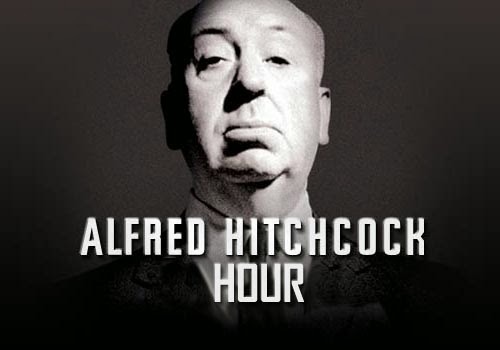
A Review of “Final Escape”, Alfred Hitchcock Hour.by Amber Doll Diaz
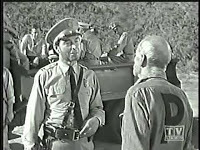 Episode title - “Final Escape”
Episode title - “Final Escape”Director - Series - Alfred Hitchcock Hour
Broadcast date - 21 Feb. 1964
Teleplay by – Based on – Reprieve by
Good evening. If you are a claustrophobic, an alcoholic or a convicted criminal, perhaps this is not the episode for you. However, if you are as bold and dare-deviling as our alliterative lead man Paul Perry (
Opening with a very Hitchcockian, divergent shot of an idyllic wooded lake, Paul Perry is apprehended by police after having recently escaped from prison. A notorious multiple bank robber, Perry is taunted by officers and then tossed back into the darkness from whence he came- along with an additional year added to his initial ten year sentence. Afterwards, we meet the elderly Doc, a “lifer” working the prison infirmary who also handles burial detail for all the convicts when they manage the age-old magic trick of making it out while still within. Doc suffers with alcoholism and the frailty of his polio-stricken niece Lisa. The warden, who despises Perry, puts him to work alongside Doc and it is then that they share their stories. Mutual compassion for their respective dilemmas makes the complacently sad Doc and the desperately wily Perry fast but unlikely friends, with something to offer on either end.
 The dialogue here is balanced and clear, and character development is something of a dream for viewers, as it brings no confusion or vague allusions in terms of each individual’s motivations. Doc’s need for Perry’s money stems from the profound love that he feels for his ill niece, and this includes a tellingly heart-wrenching scene with the sickly girl during visiting hours. The warden despises Perry’s insubordination because it undermines his reputation of callous authority; and of course Perry longs to escape because he has clearly contemplated his own disdain for mundanity:
The dialogue here is balanced and clear, and character development is something of a dream for viewers, as it brings no confusion or vague allusions in terms of each individual’s motivations. Doc’s need for Perry’s money stems from the profound love that he feels for his ill niece, and this includes a tellingly heart-wrenching scene with the sickly girl during visiting hours. The warden despises Perry’s insubordination because it undermines his reputation of callous authority; and of course Perry longs to escape because he has clearly contemplated his own disdain for mundanity:“That world out there Doc…it’s got a little more to offer me than what I can find in here.”
“[in reference to the warden criticizing his ingratitude] Appreciate what?! The next ten years of mush, beans and sow bellies?!”
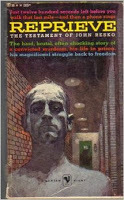 As compelling as the episode itself are the traumatic and true autobiographical events teleplay writer John Resko utilized when writing the episode. In 1930, John Resko and his accomplice had been tried and convicted for the murder of a store-owner during a botched robbery. Less than a year later, he found himself shaven and sweating in Sing Sing’s electric chair, quite literally moments away from execution when word came in of his pardon by President FDR. He was just nineteen years old. Friends and family had written tirelessly upon his true favorable nature as well as the mental hold his devious accomplice had on him. He was then transferred to the extremely crude and horrifying fortress-like Clinton Prison in New York, where he would be freed years later. Resko went on to publish a memoir entitled Reprieve in 1956, having spent decades painting and writing behind bars. He had gained a significant amount of notoriety as well, for on his behalf Groucho Marx once wrote: “Sir, I would be glad to sign a petition to have this artist released from the penitentiary. I agree with you that he has paid his debt to what is loosely called society.”
As compelling as the episode itself are the traumatic and true autobiographical events teleplay writer John Resko utilized when writing the episode. In 1930, John Resko and his accomplice had been tried and convicted for the murder of a store-owner during a botched robbery. Less than a year later, he found himself shaven and sweating in Sing Sing’s electric chair, quite literally moments away from execution when word came in of his pardon by President FDR. He was just nineteen years old. Friends and family had written tirelessly upon his true favorable nature as well as the mental hold his devious accomplice had on him. He was then transferred to the extremely crude and horrifying fortress-like Clinton Prison in New York, where he would be freed years later. Resko went on to publish a memoir entitled Reprieve in 1956, having spent decades painting and writing behind bars. He had gained a significant amount of notoriety as well, for on his behalf Groucho Marx once wrote: “Sir, I would be glad to sign a petition to have this artist released from the penitentiary. I agree with you that he has paid his debt to what is loosely called society.”Certainly the most fundamental element of noir is the entwinement of disillusionment within the seedy annals of criminal activity, and if “Final Escape” can be described in any way it is in those terms. If events such as what befell John Resko don’t make for the ideal assist in crafting a noir installment, then I am no longer at liberty to say what might, and it is my defeated summation that a tale as potent as “Final Escape” is only further exalted by credible writing and writers. Having been drawn for the most part from actual happenstance, this episode is that much more memorable and well executed.
Published on January 12, 2014 20:25



